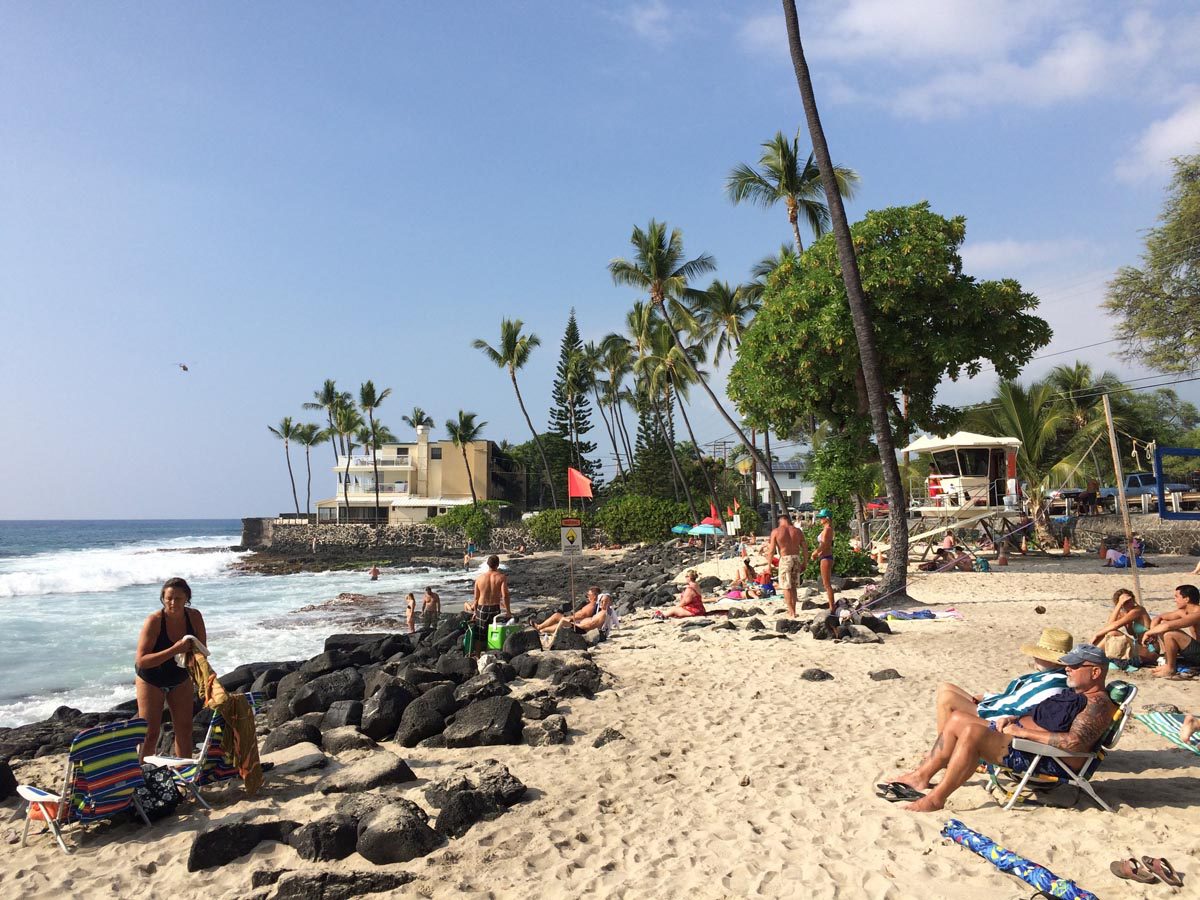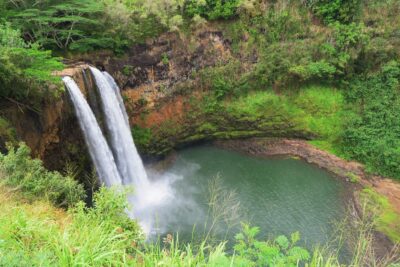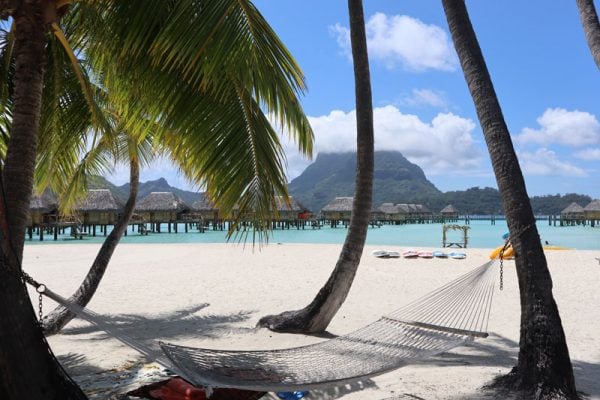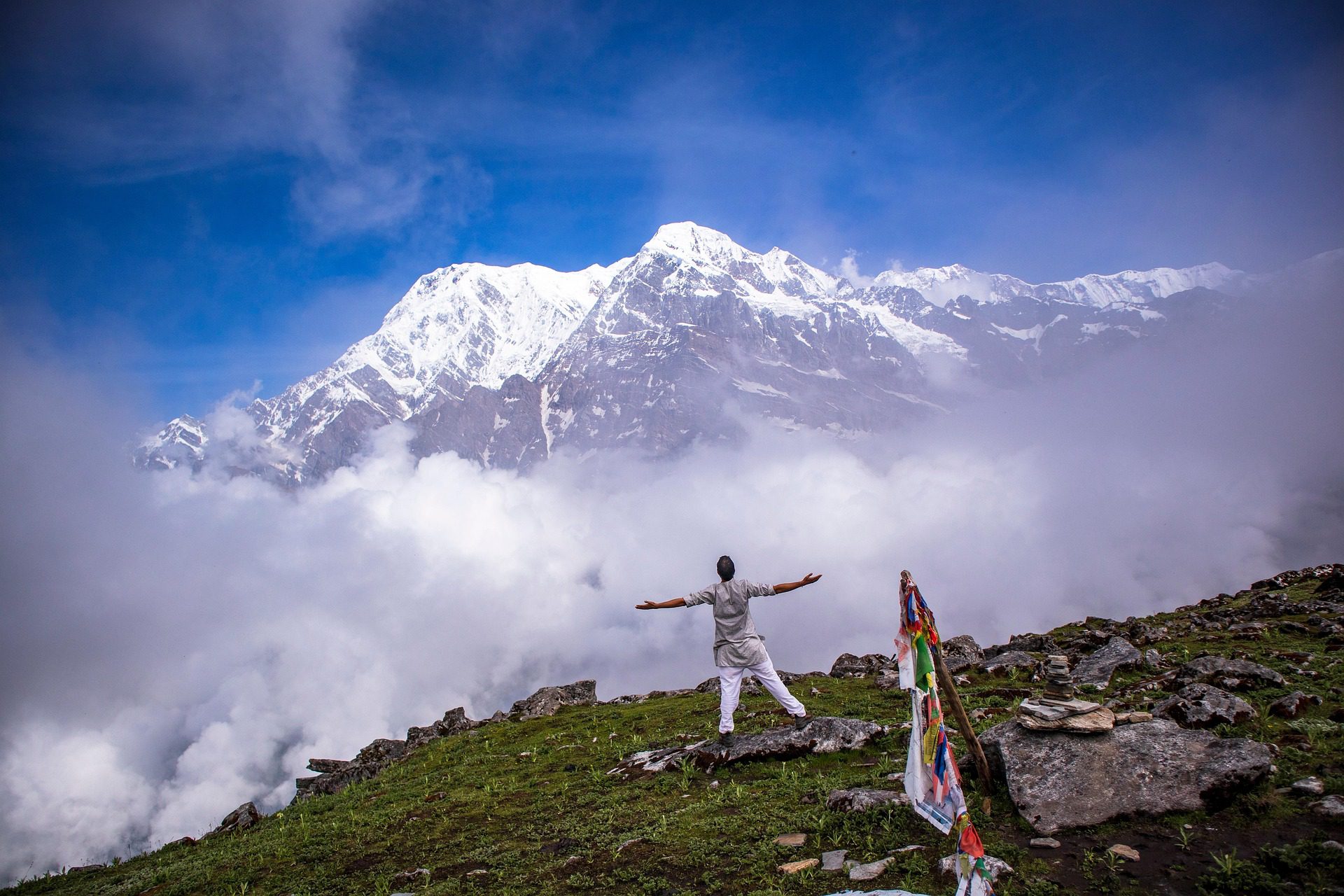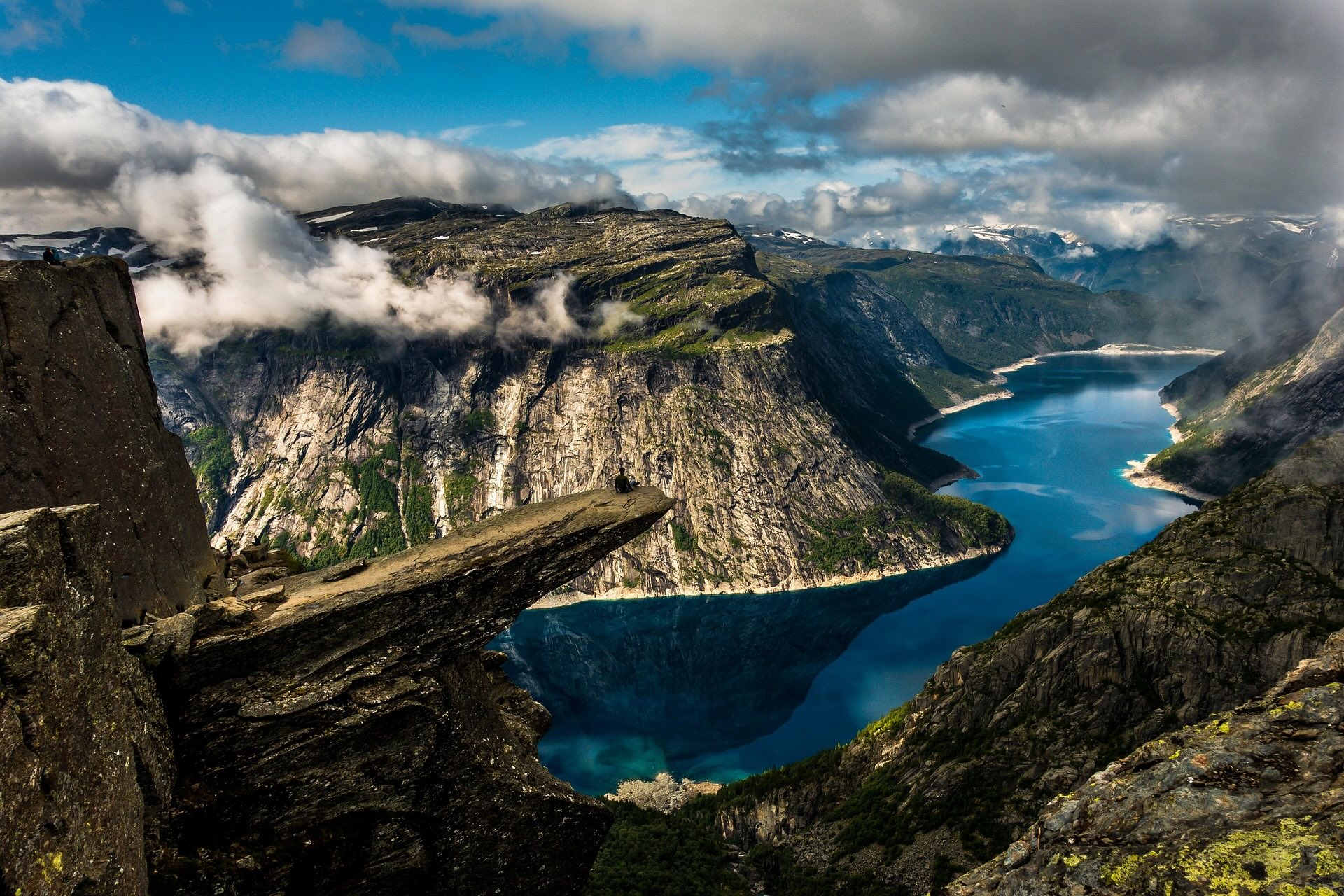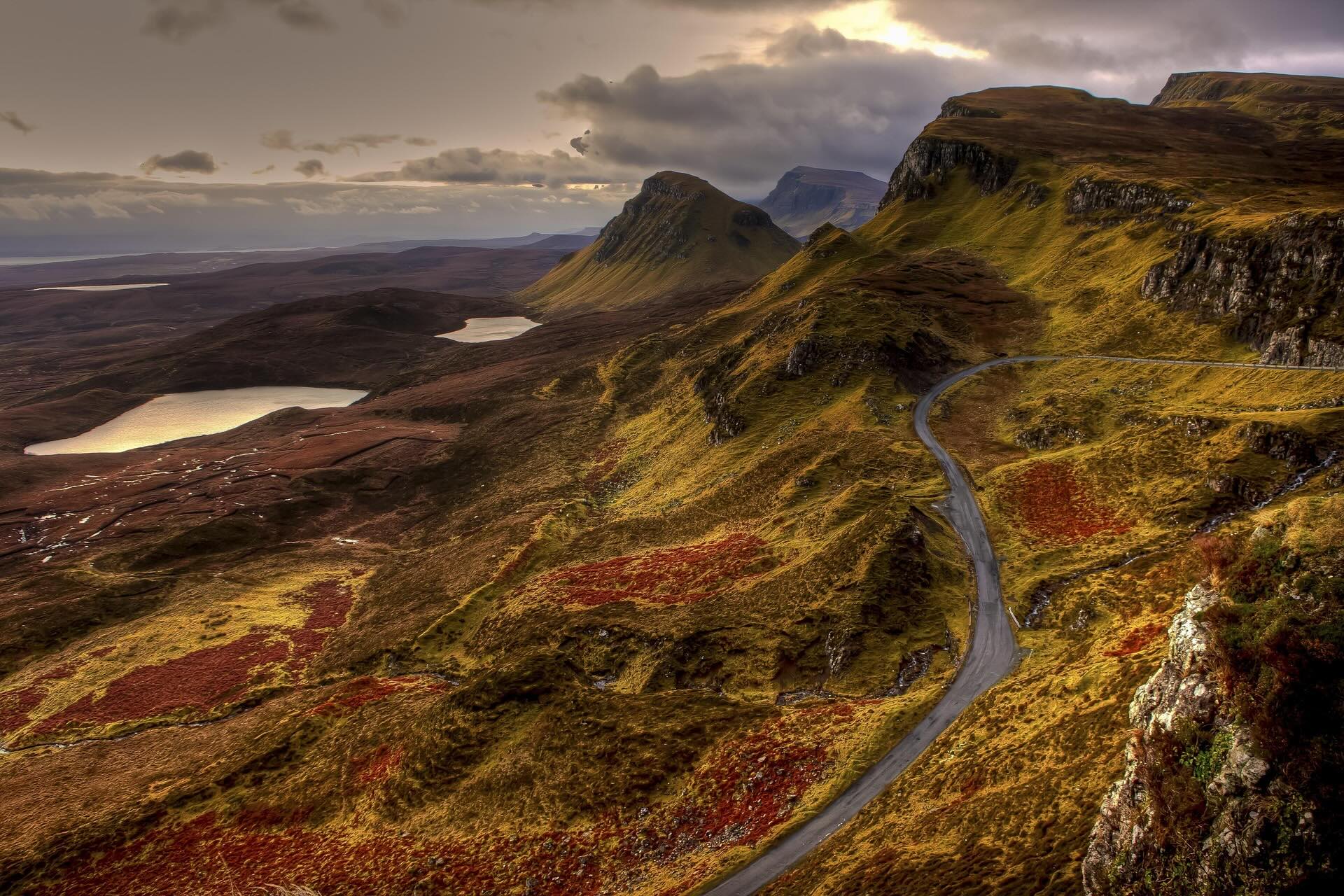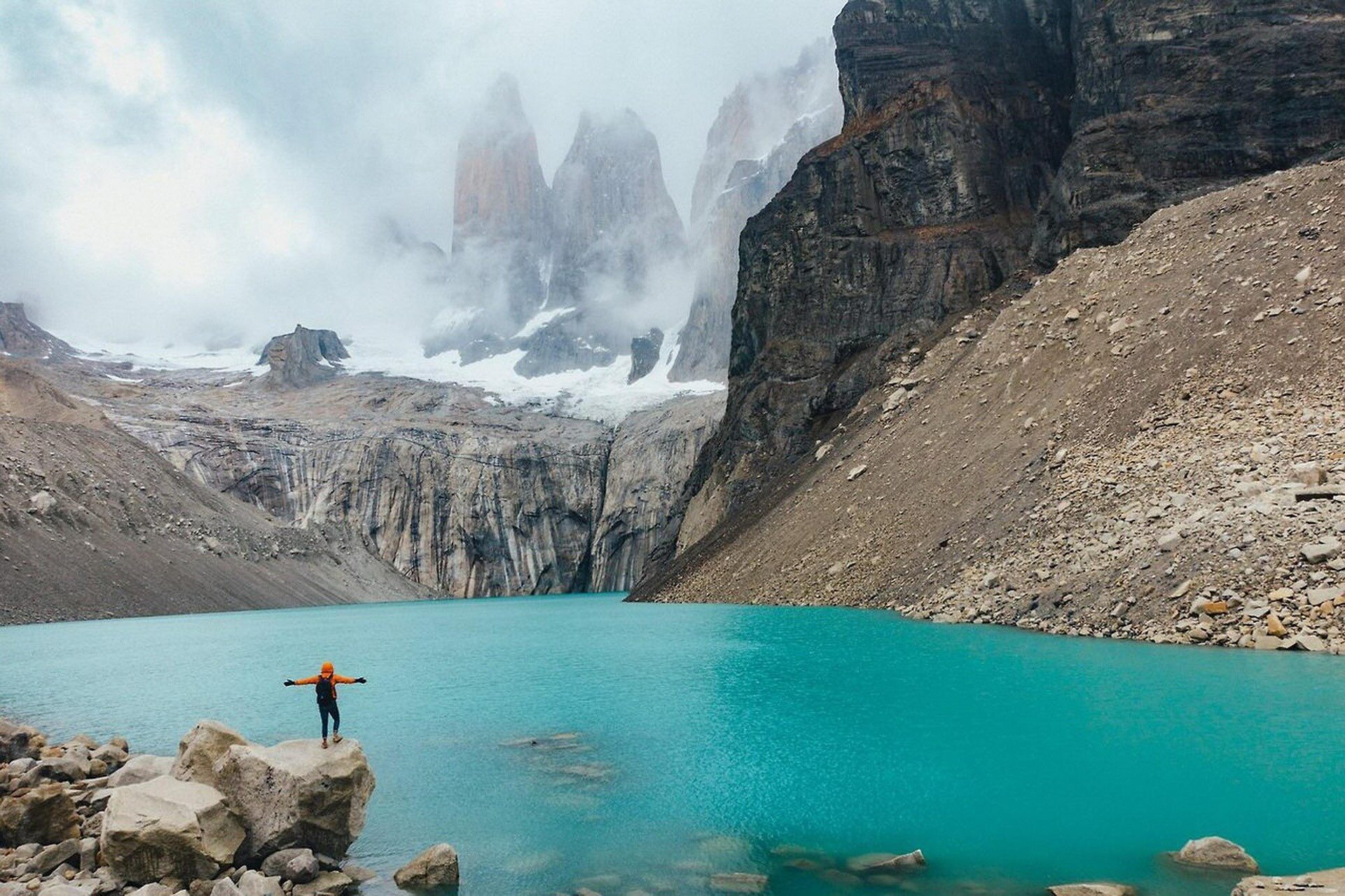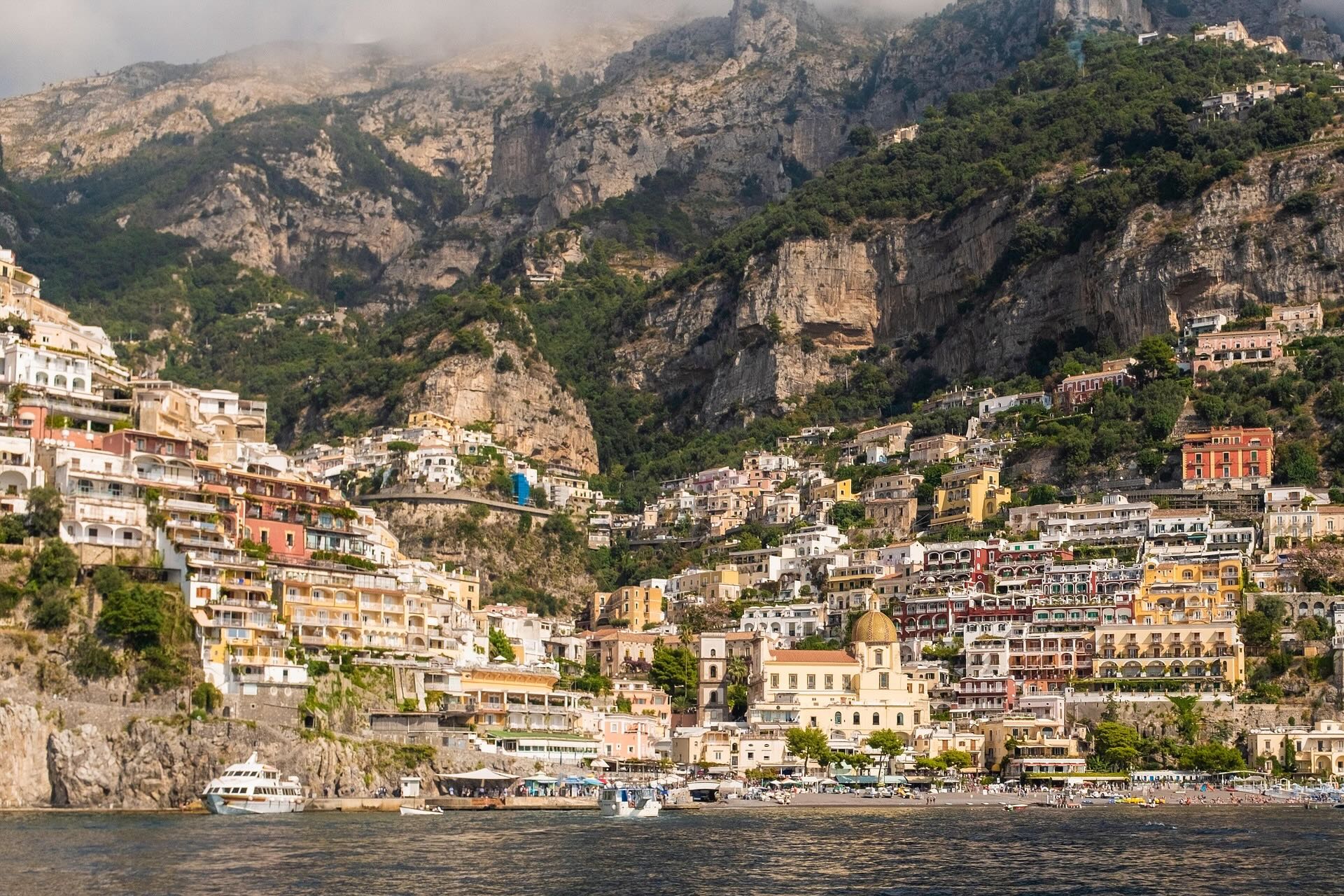5 Days In The Big Island Itinerary
Day 3: Snorkeling, Mauna Kea, Diving with Manta Rays
Choose from four options on day three of our Big Island itinerary. This is the last day we’ll spend on the Kona coast before moving east to the Hilo side. There’s something for everybody on this day, but my favorite is option number one, which includes the best snorkeling and sunset (and stargazing) on the Big Island.
- Option 1: Snorkeling and sunset in Mauna Kea
- Option 2: The Green Sand Beach
- Option 3: City of Refuge, Snorkeling at Two-Step & Beach Time
- Option 4: Swimming or diving with manta rays
Option 1: Snorkeling in Kealakekua Bay & Sunset In Mauna Kea
In this option, we’ll hike to the Captain Cook Monument and snorkel in Kealakekua Bay in the morning. In the late afternoon, we’ll drive to Mauna Kea to witness a glorious sunset and do some stargazing. You can skip the hike and join a snorkeling tour to Kealakekua Bay.
Morning at the Farmers Market
Start this action-packed day bright and early in downtown Kailua with a visit to the Kona Farmers Market. Although the market also caters to tourists, with many ‘classic’ Hawaii souvenir stalls, it also offers an impressive variety of locally grown fruits and vegetables. In fact, I used to come down here from the farm I was volunteering on to barter with the vendors for produce we were short on. It’s a decent place to browse and stock up for the rest of the day.
If you opt for the hike to the Captain Cook Monument (from where you’ll snorkel), buy or prepare a picnic lunch in Kailua before hitting the road to the trailhead.
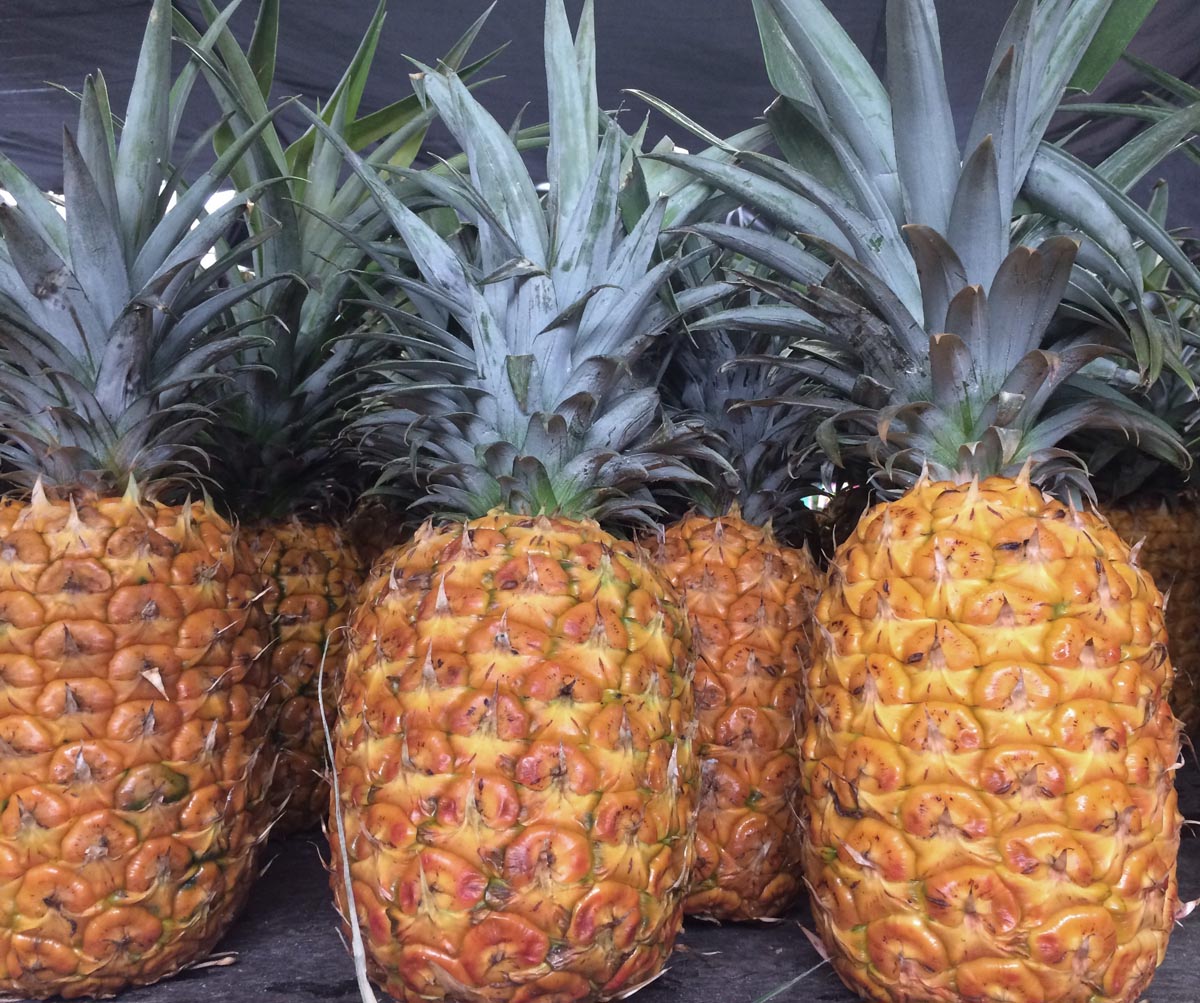
Alternatively, if it’s Sunday, begin the drive south and stop at the Pure Kona Green Markets near Captain Cook Village. The market is oriented around food, Kona coffee, and crafts – a refreshing and quick stop before the hike.
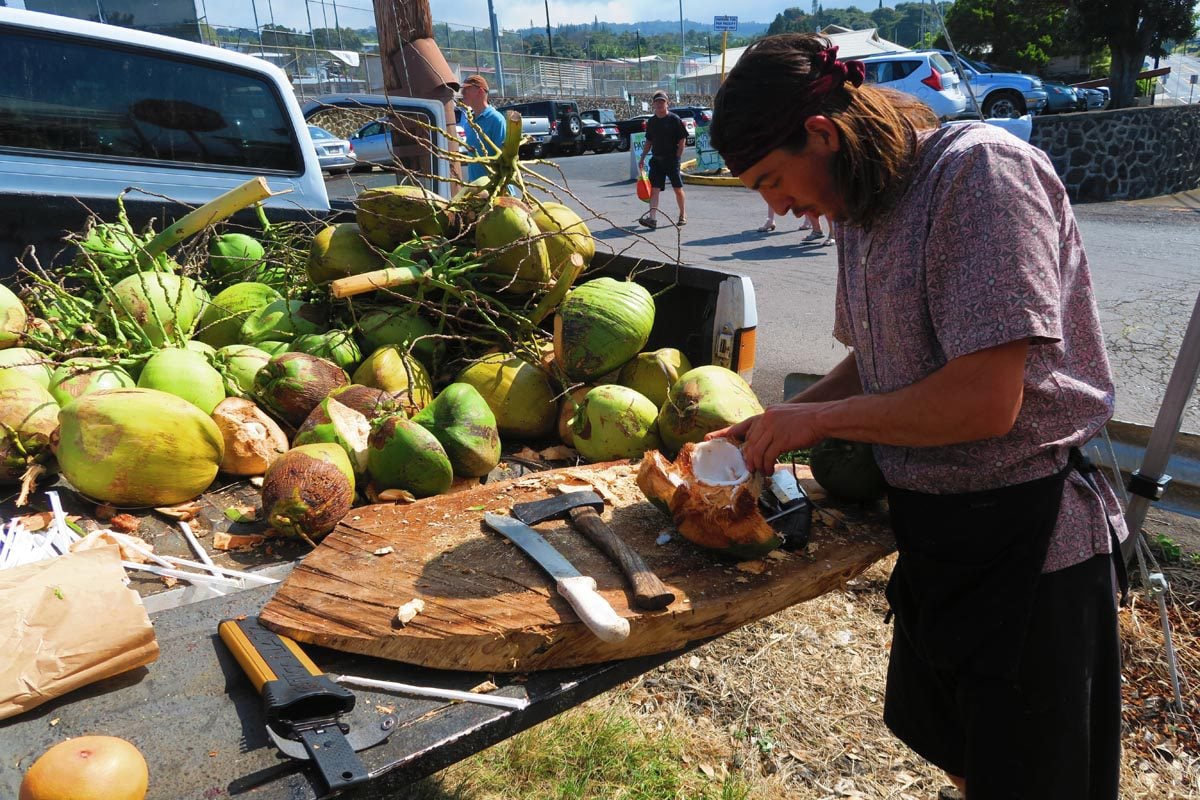
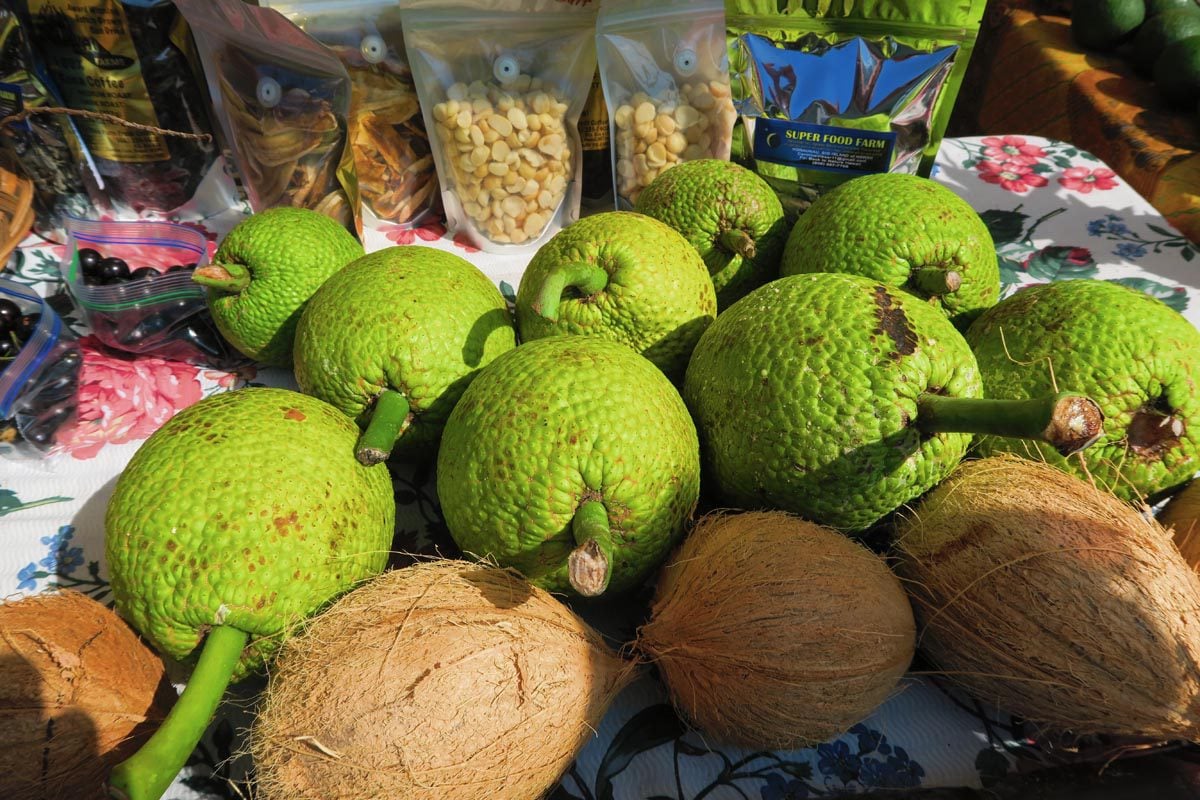
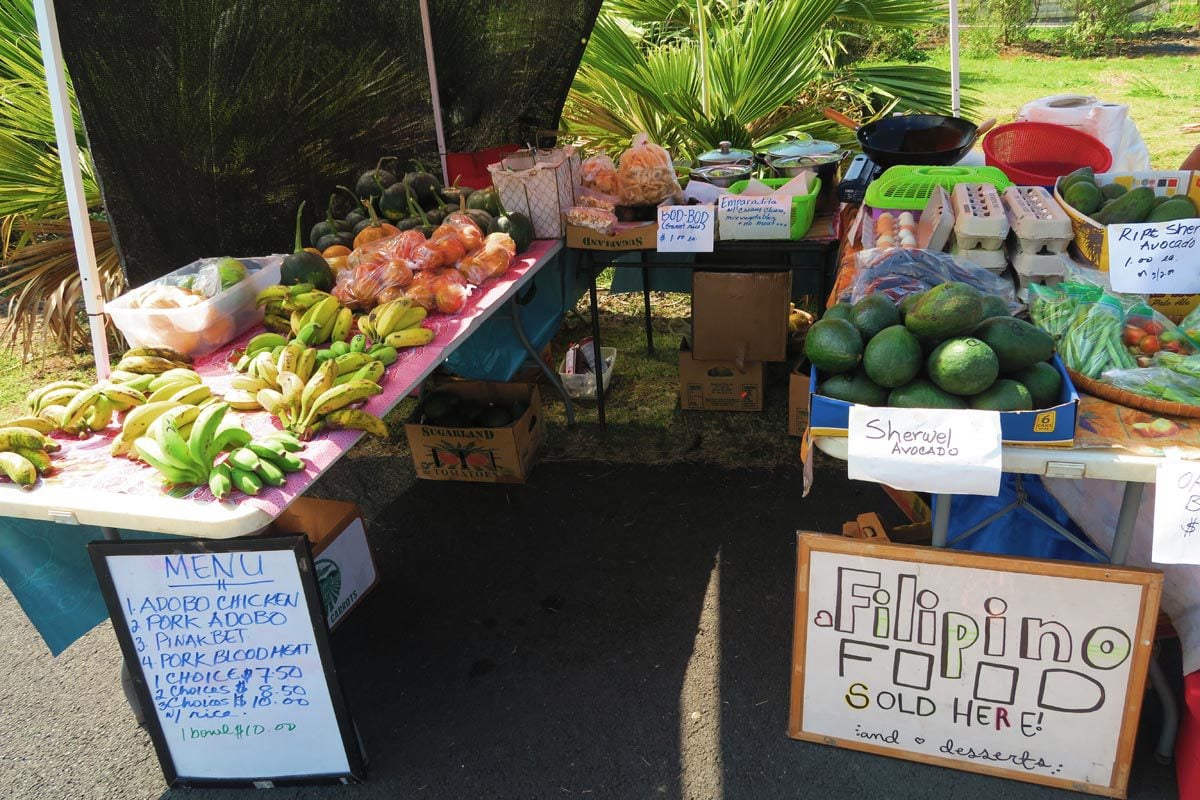
Captain Cook Monument Hike
The trail to the Captain Cook Monument in Kealakekua Bay is an adventurous way to reach the Kona coast’s best snorkeling spot. You can also join a snorkeling boat tour from Kona and skip the hike.
Background
In 1779, the great Captain James Cook sailed into Kealakekua Bay and forever changed the history of Hawaii. The first white man to come in contact with native Hawaiians, Cook and his crew were treated to a friendly reception, likely because their visit coincided with the Makahiki Festival – a four-month affair packed with lots of food, sexual activity, games, and no tribal violence.
Cook departed the Big Island three weeks later but returned after encountering rough seas. By now, the holiday was long over, and life returned to normal. There were no parties this time around, and tensions were high. In what is considered a huge misunderstanding, the natives, who greatly revered the explorer, violently killed him when Cook fired a warning shot that killed one of the chief’s guards. In his honor, a monument was erected years later at the site, and the tiny plot of land was ceded to the British Crown (this is technically UK territory).
The Hike
You can only reach the Captain Cook Monument and the excellent snorkeling spot in Kealakekua Bay by hiking from the coastal road or joining a snorkeling tour from Kona (or kayaking). I highly recommend the hike if you are fit and the boat tour if you have small children.
To reach the trailhead, park your car at the top of Napopo Road (see accompanying map). Don’t leave anything visible in your car, and look for the Ka’awa Loa Trail sign, which marks the start of the hike. For about 45 minutes, you’ll be hiking downhill, and the exciting views start after about 20 minutes. In front of you, a barren lava field tumbles down into the blue ocean, and to your left are the rugged cliffs that shelter Kealakekua Bay. On a clear day, there is no shade around here, so pack lots of water and always wear a hat.
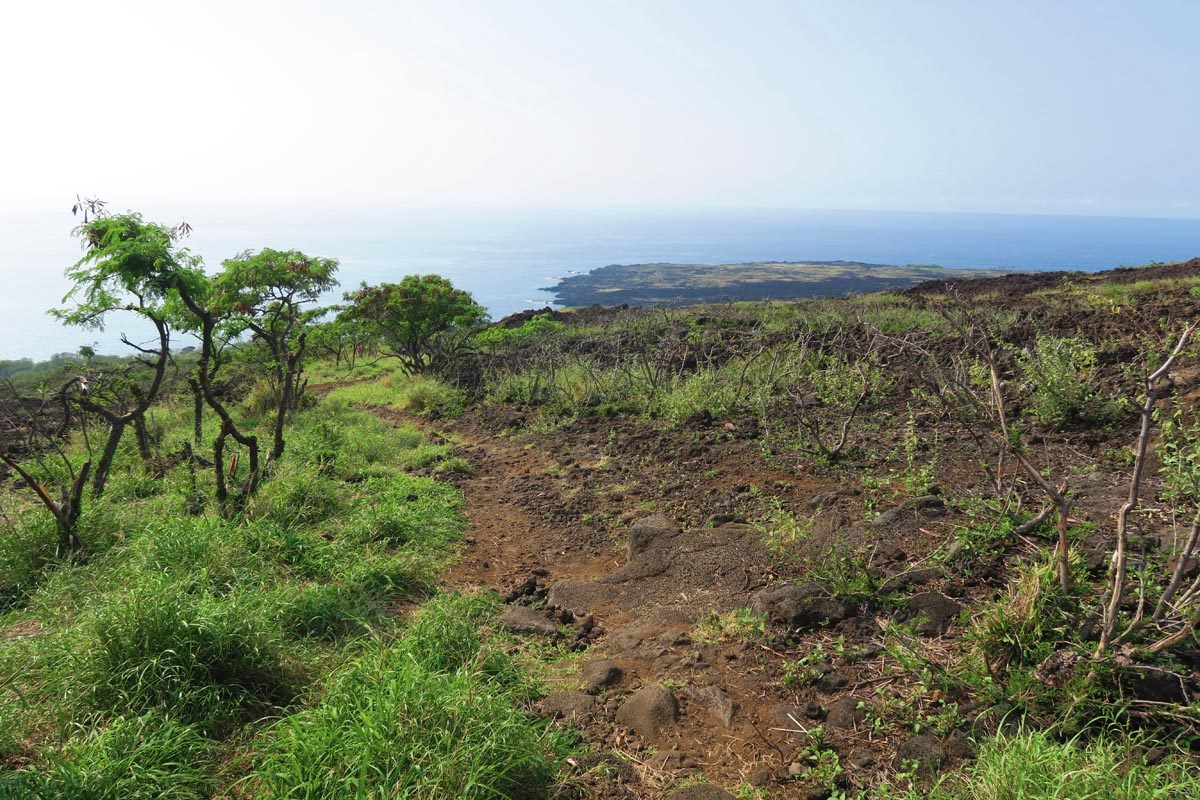
The trail ends in a wooded area, the spot where Cook lost his life and where a commemorating obelisk stands today. It is here that it is time to change, put your snorkeling gear on, and jump from the decaying cement ledge into the bay’s pristine waters. The Captain Cook Monument is also a great picnic spot, so come prepared.
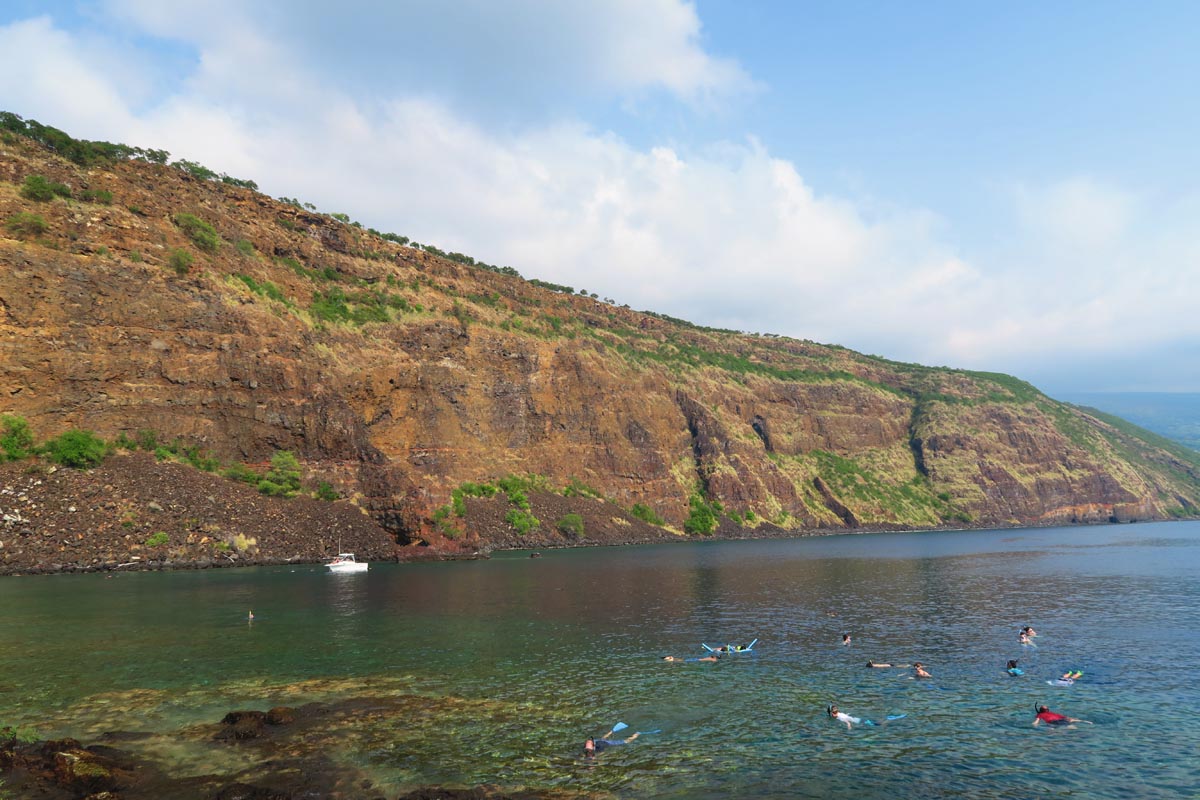
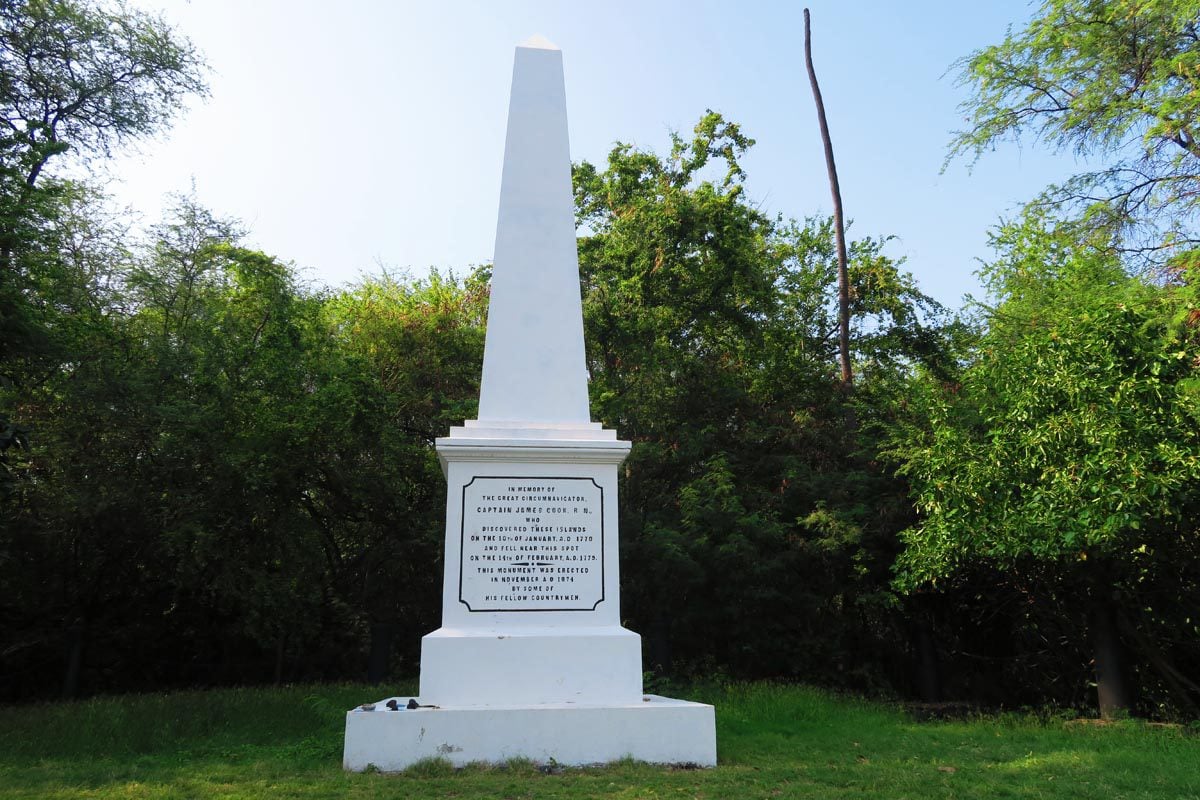
Snorkeling in Kealakekua Bay
Sheltered Kealakekua Bay is considered the best place on the Big Island for snorkeling. Visibility is excellent, and tropical fish are abundant. If you’re extra lucky, you might encounter sea turtles and even dolphins. This snorkeling spot can get very busy on weekends and when boat tours arrive from Kailua. It’s best to get here late afternoon or early morning.
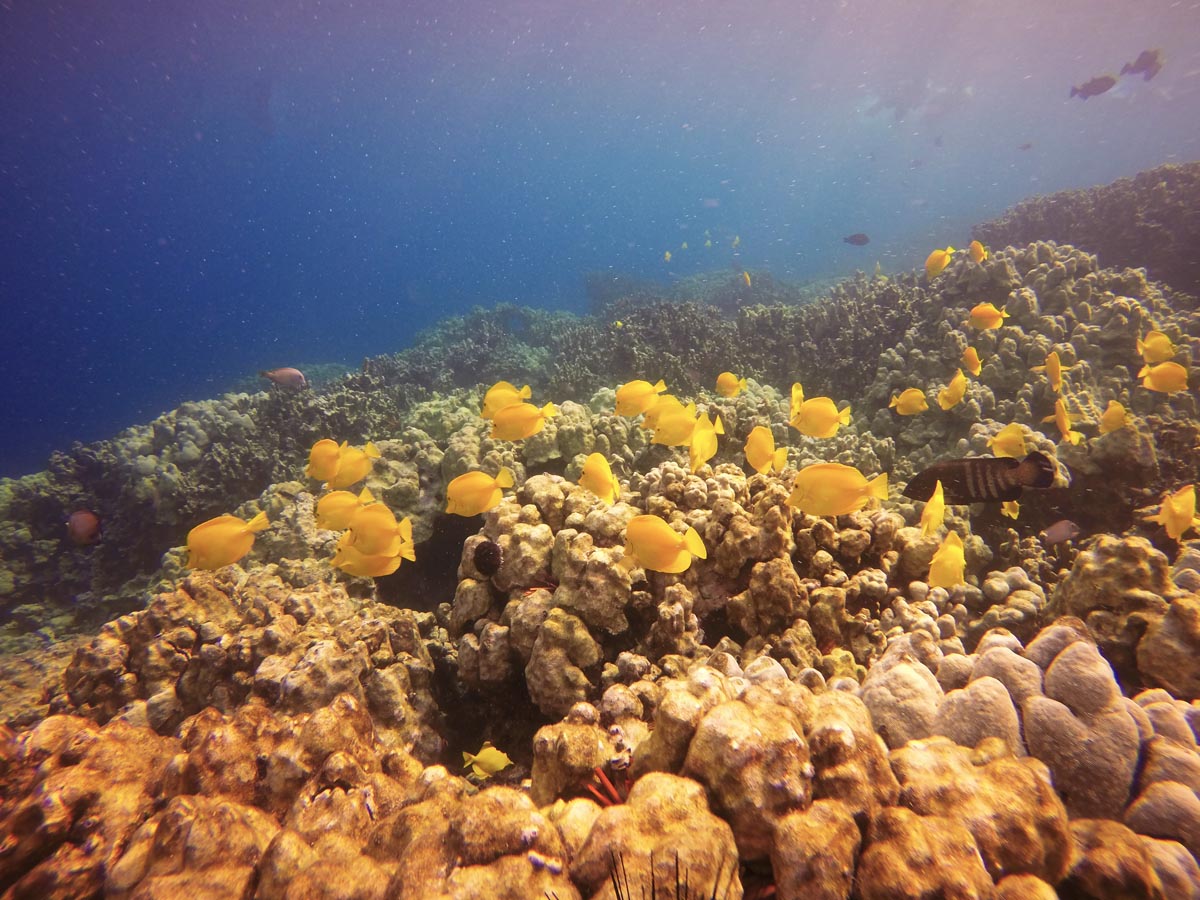
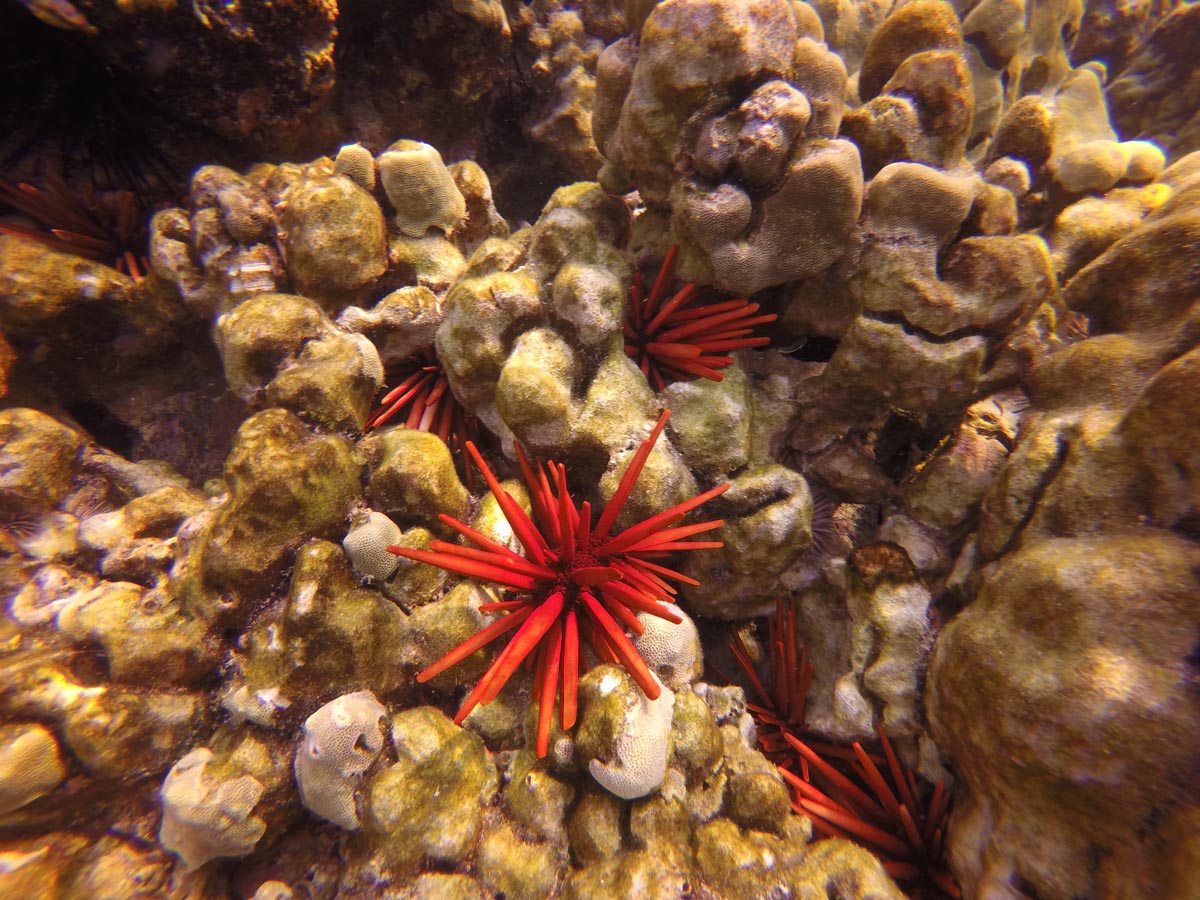
Logistics: Hiking down takes about 45 minutes, and returning to the top takes approximately 60-90 minutes. Bring plenty of water and sun protection and wear either shoes or waterproof sandals. For snorkeling, fins are not a must, but have some foot protection (reef shoes or sandals). Bring a full change of clothes for after the hike.
End of the World Sea Cliffs
Driving back toward Kailua, take the coastal road this time (Mamalahoa Bypass Rd) and stop at the End Of The World sea cliffs. Despite its proximity to town, not many visitors know this beautiful spot. Here, you’ll witness the shaping powers of the Pacific Ocean as waves strike the lava cliffs with intense power.
Even on a rare calm day, the beauty of the place is worth the drive. I recommend snapping a few photos from the popular viewing area at the start of the path and then continuing for a private viewing of the spectacle from the surrounding cliff (brave locals sometimes practice cliff jumping from here).
The End of the World is also a site of historical significance. Here, King Kamehameha II (Liholiho) battled his cousin after the former broke the traditional kapu system by eating at the same table with females – a highly forbidden act in those days. The battle was bloody and ended with Liholiho’s victory and the end of the rigid system. Rocky terraces near the entrance to the cliffs are all that remain from a battle that shaped the future of Hawaii.
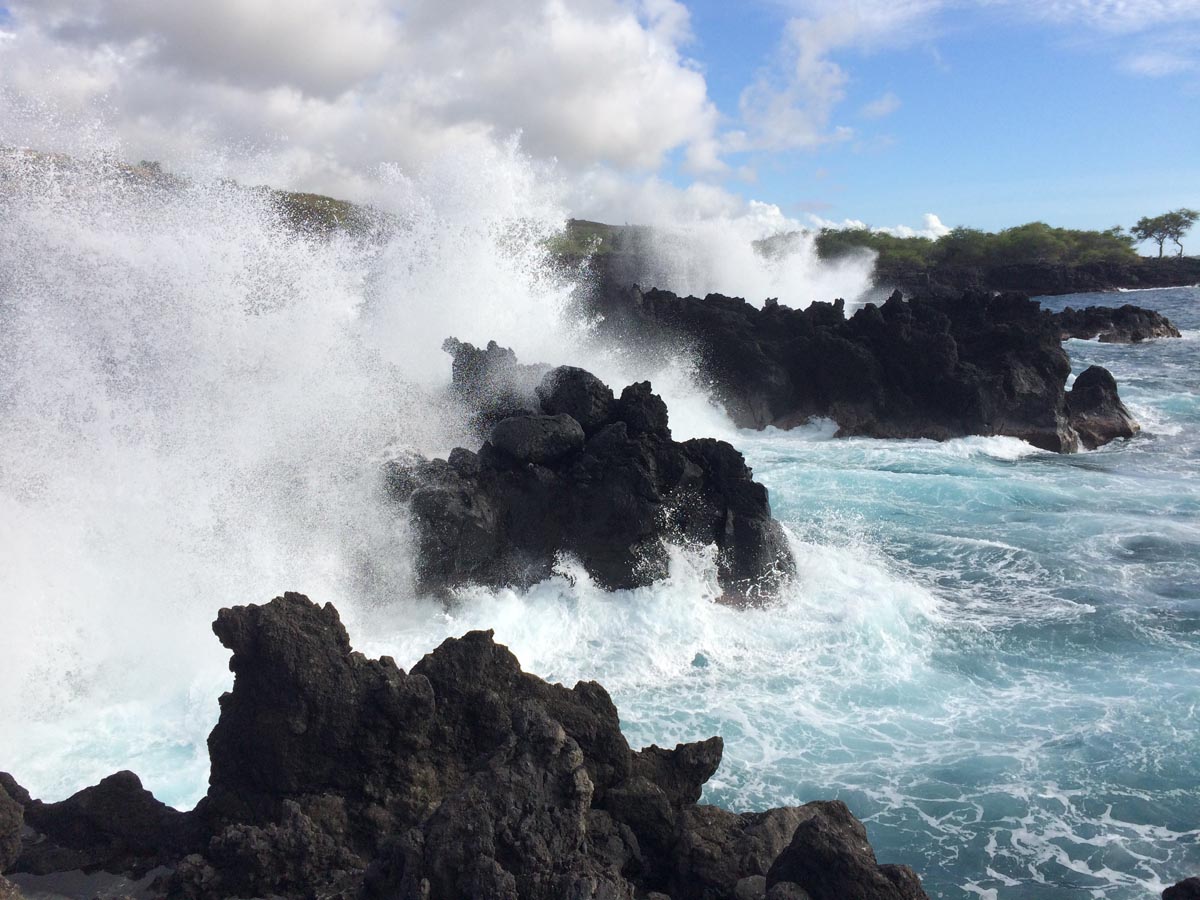
Takeaway Dinner at Da Poke Shack
With Umekes Fish Market Bar & Grill (see day one itinerary), Da Poke Shack is the best place on the Kona coast for poke. Take note of their opening hours and try getting there early, as they often sell out quickly.
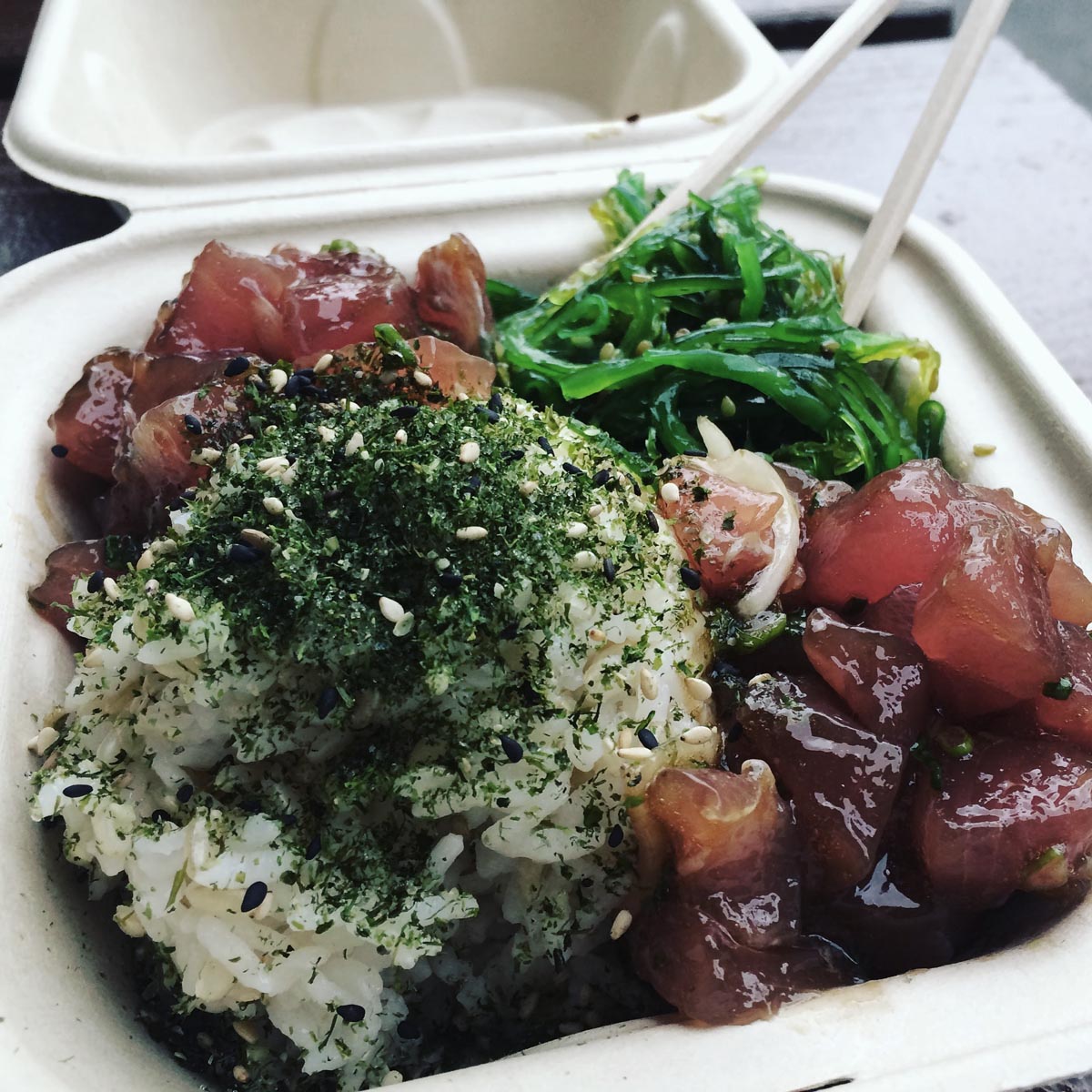
Sunset & Stargazing in Mauna Kea
You now have a 75-90 minute drive from Kailua to Mauna Kea (50 minutes from Hilo), and you want to get here at least 45-60 minutes before sunset (check sunset time). This evening is one of those experiences that vividly live in your memory for eternity, and I strongly recommend making the drive.
Many visitors join guided sunset and stargazing tours on Mauna Kea. Apart from not having to drive on Saddle Road, tours use 4WD vehicles that bring you to the less-crowded and more impressive Mauna Kea summit. In addition, you’ll benefit from knowledgeable guides who share the scientific, geographical, and cultural significance of the place with the small group.
Background
Mauna Kea is the highest point in the Hawaiian Islands, rising from the ocean’s depths to 13,803 ft (4,207m). If the height of mountains was measured from their base on the ocean floor, Mauna Kea would be the tallest mountain in the world! It is a shield volcano that gradually rises to immense proportions and resembles a shield lying on the ground with its protective end facing the sky.
A sacred site to ancient Hawaiians, Mauna Kea’s summit is often covered in snow. Due to its immense height, the lack of light pollution, and the thin air – Mauna Kea is a prime location for observing the heavens. Its summit is home to the world’s largest concentration of high-powered telescopes!
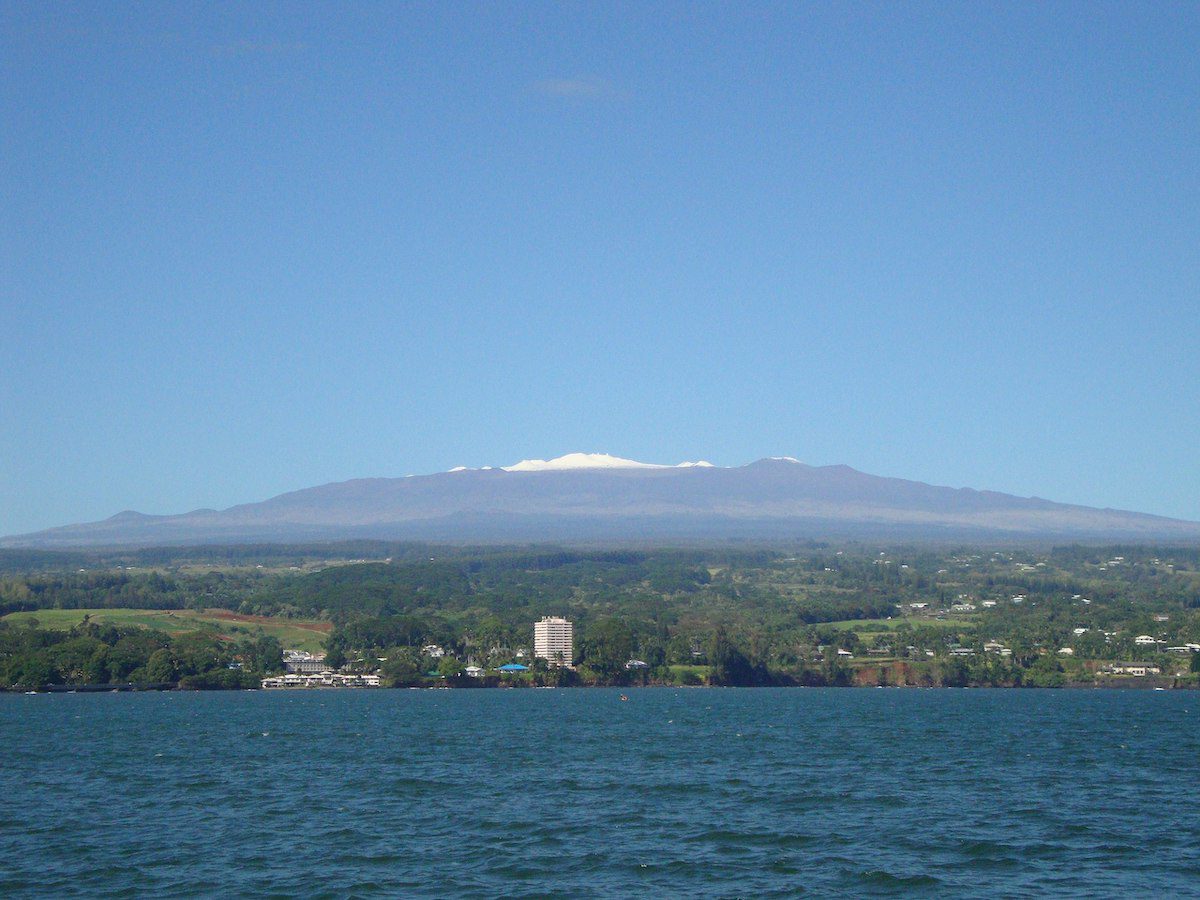
Driving to Mauna Kea
Mauna Kea is a magical place to witness glorious sunsets and observe the night sky. However, check weather conditions and current restrictions to ensure it‘s worth the long drive. Only come here when the forecast calls for a clear night, preferably without a strong breeze, as it is freezing up here after the sun sets.
To reach Mauna Kea, drive on Saddle Road (Highway 200) – a scenic highway that slices through the island’s mountainous interior on the saddle between Mauna Kea and Mauna Loa. Expect to climb what seems to be a never-ending ascent until you reach the saddle.
The scenery is enjoyable throughout the journey, with the tropical changing to desert-like and even to green pastures reminiscent of the Irish countryside. The weather is peculiar up here, with storms quickly disappearing as you ascend past the clouds with nothing but intense sun and the bluest of skies.
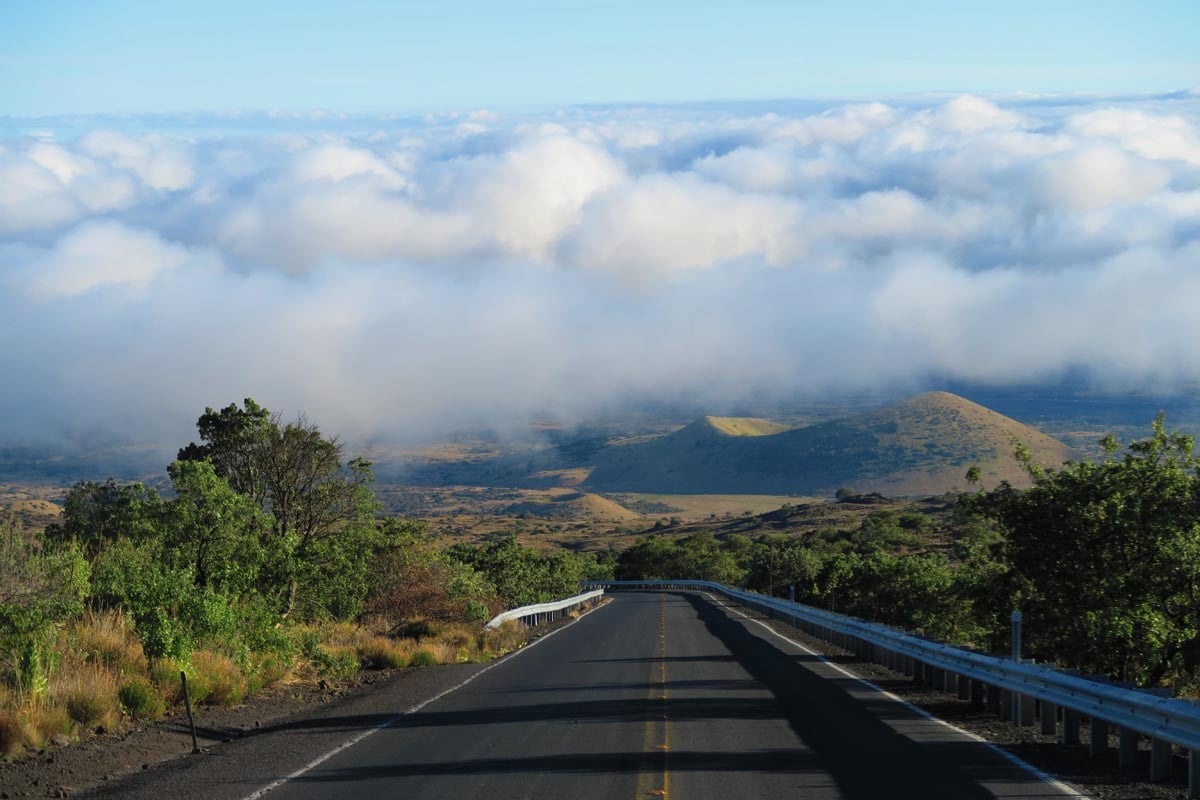
Sunset in Mauna Kea
You’ll turn off Saddle Road and drive up to the Mauna Kea Visitor Information Center (9,200 ft | 2804 m), where you’ll park your car. If you have a proper 4WD and the road to the summit is open, you can drive up and watch the sunset next to the massive telescopes. If you do not have a 4WD, change into your (heavy) winter gear and begin the 20-30-minute hike to Sunset Hill. Grab a spot, get your camera ready, and enjoy the breathtaking views of cinder cones beneath your feet and Mauna Loa in the distance, followed by an unforgettable sunset.
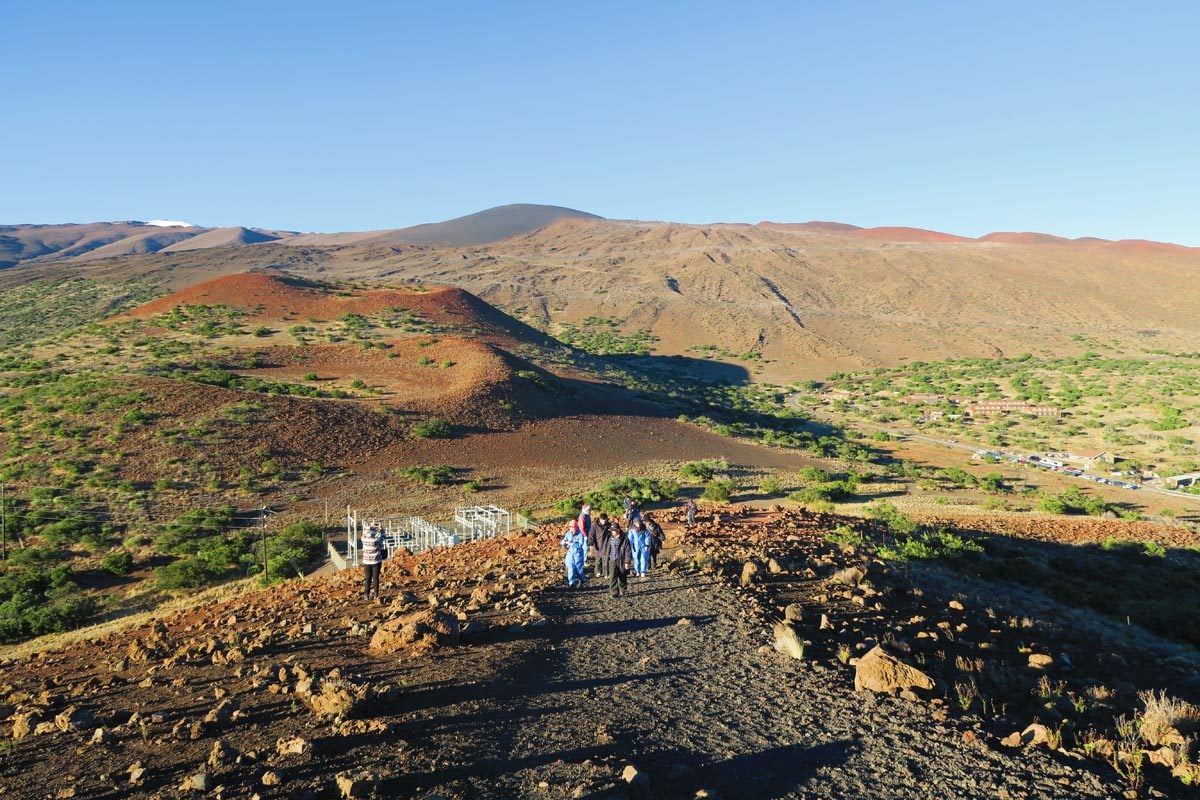
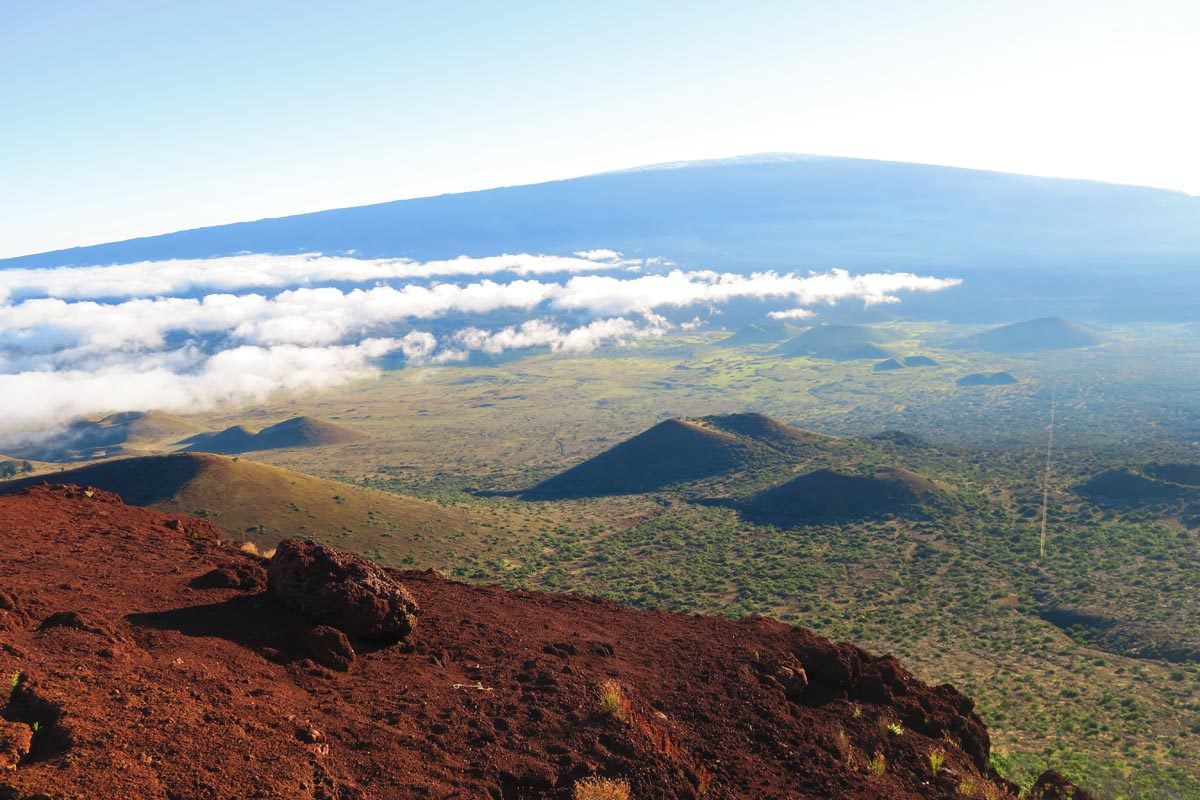
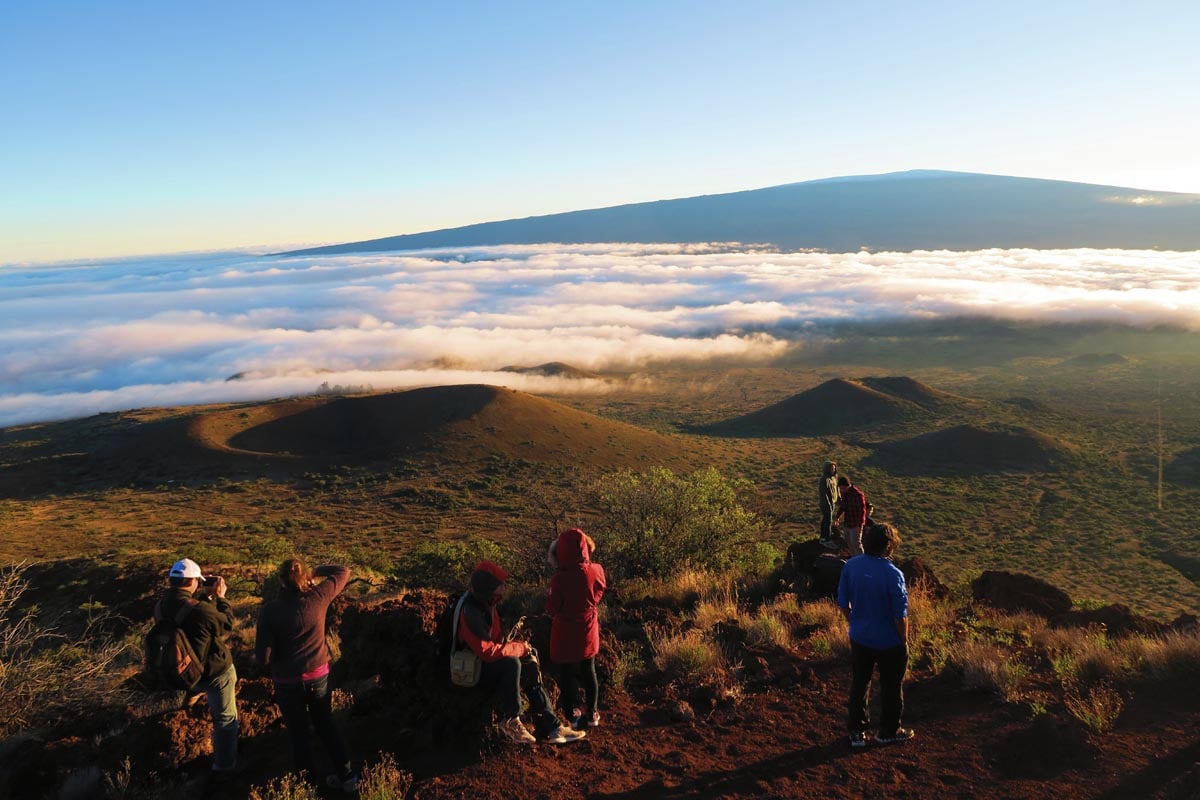
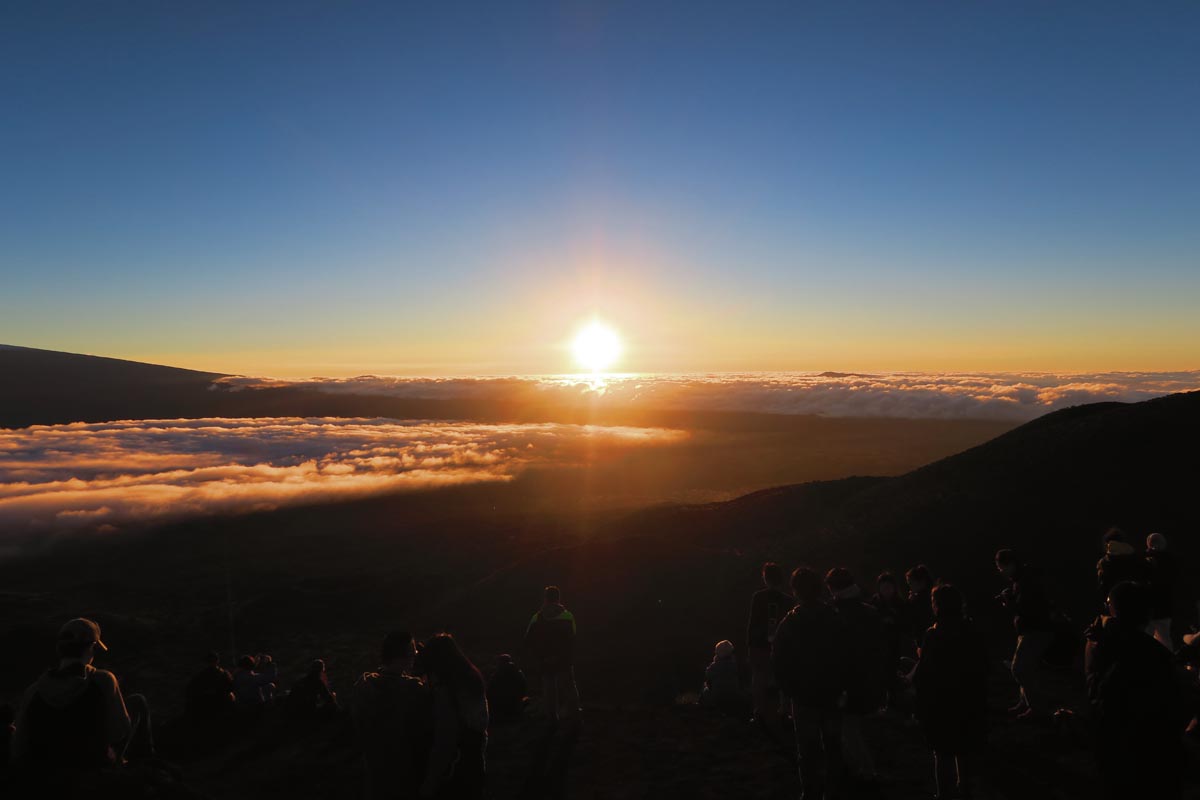
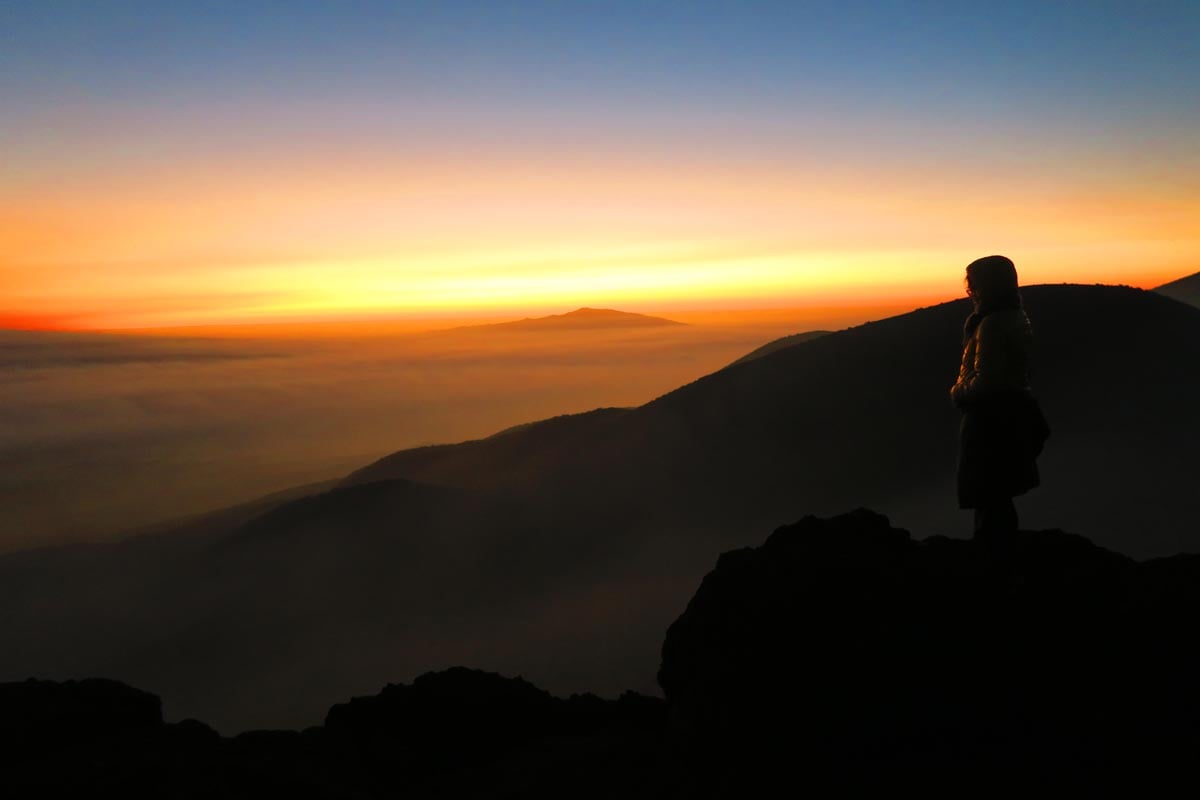
Stargazing in Mauna Kea
Once the sun sets, things get even colder in Mauna Kea. Walk back to the Mauna Kea Visitor Information Center to warm up, watch the informative video, buy souvenirs or something hot to drink, and wait for darkness to fall. Stargazing in Mauna Kea takes place outside the visitor’s center. Scientists sometimes welcome stargazers to the large telescopes at the summit. Check the visitors’ center website for more information.
Most days, the center’s volunteers set up telescopes pointing to interesting spots in the night sky. Depending on the season, you might see Venus, Orion, Jupiter, and other celestial bodies that make you realize how tiny we are. The friendly staff also explains how it all relates to ancient Hawaiian history. The stargazing is an enjoyable experience, especially for kids, unless it’s exceptionally busy.
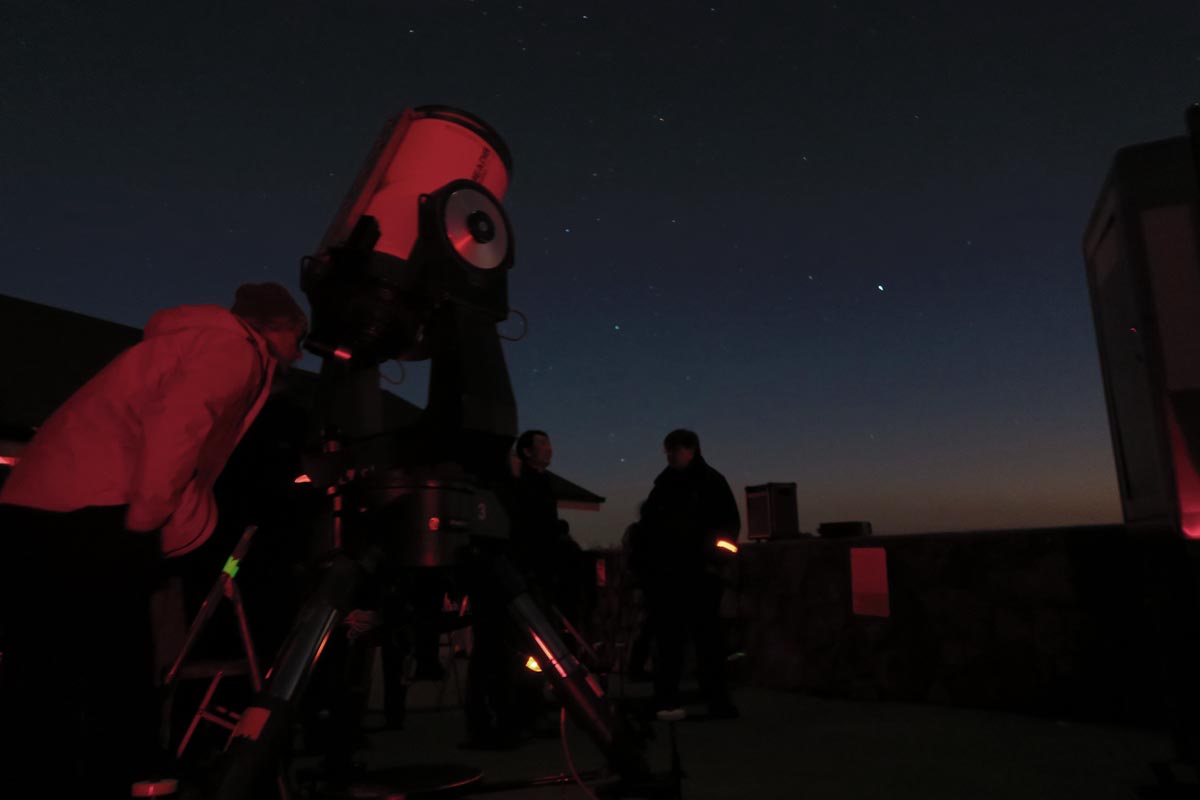
Logistics: check weather conditions before driving up here. Understand that at this altitude, physical activity is much harder, so take it easy, listen to your body, and drink plenty of water. Pack ultra-warm clothes (think Canadian winter), a flashlight, tissues (you’ll have a runny nose), lip balm, and comfortable shoes.
Bring with you some tea bags or ramen noodles as hot water might be available for free (food + drinks can be purchased). When driving back down, put the car into low gear (D2) to avoid unnecessary strain on your breaks.
Hiking to the summit of Mauna Kea
It is possible to hike to the summit of Mauna Kea from the visitor’s center. This challenging full-day hike will take about 10 hours to complete (16 miles return). It is very (very) challenging since it begins with a 1,400-meter ascent lasting for 8 miles! The trail pretty much parallels the 4WD access road to the summit. The first few miles are a treacherous climb on Mars-like loose sand and rock. The scenery is, however, out of this world, and you’ll likely not see a soul on the trail.
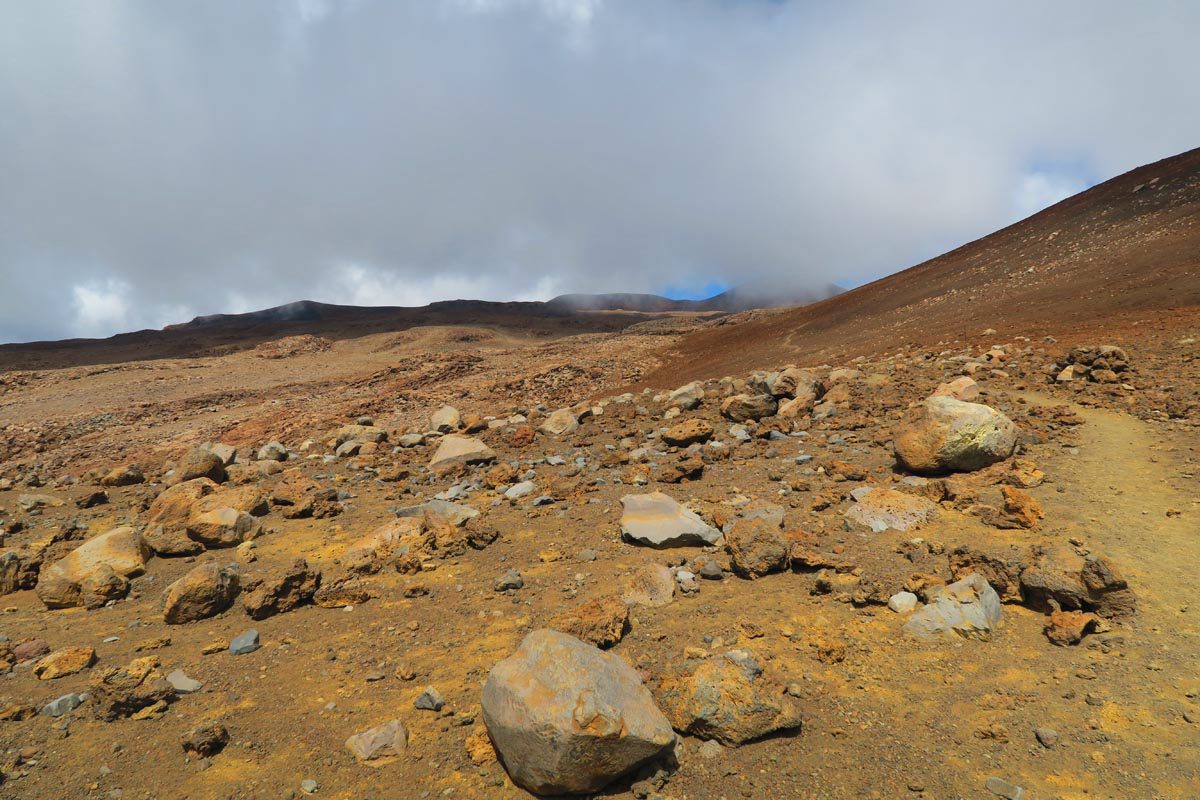
After about 3.5 hours of hiking, you’ll reach Lake Wai’au – the third-highest lake in the US and a peculiar site amid the desert landscape.
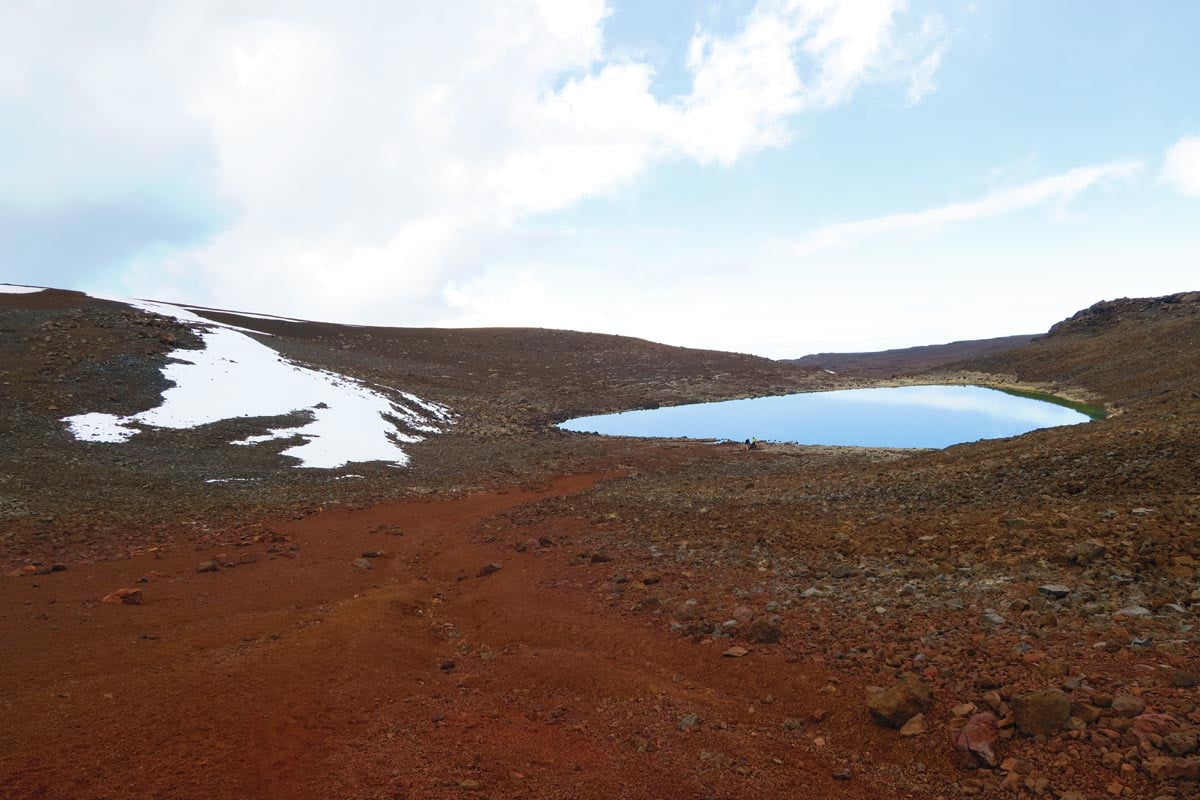
It’s just a final climb to the observation area and a 1-mile ascent on the paved road to the summit. The views from here are some of the finest in Hawaii. On a clear day, you can see the island of Maui in the distance. To get back down, you can either try your luck with hitchhiking, walk back on the paved road, or hike on the same trail you used for climbing. Good luck!
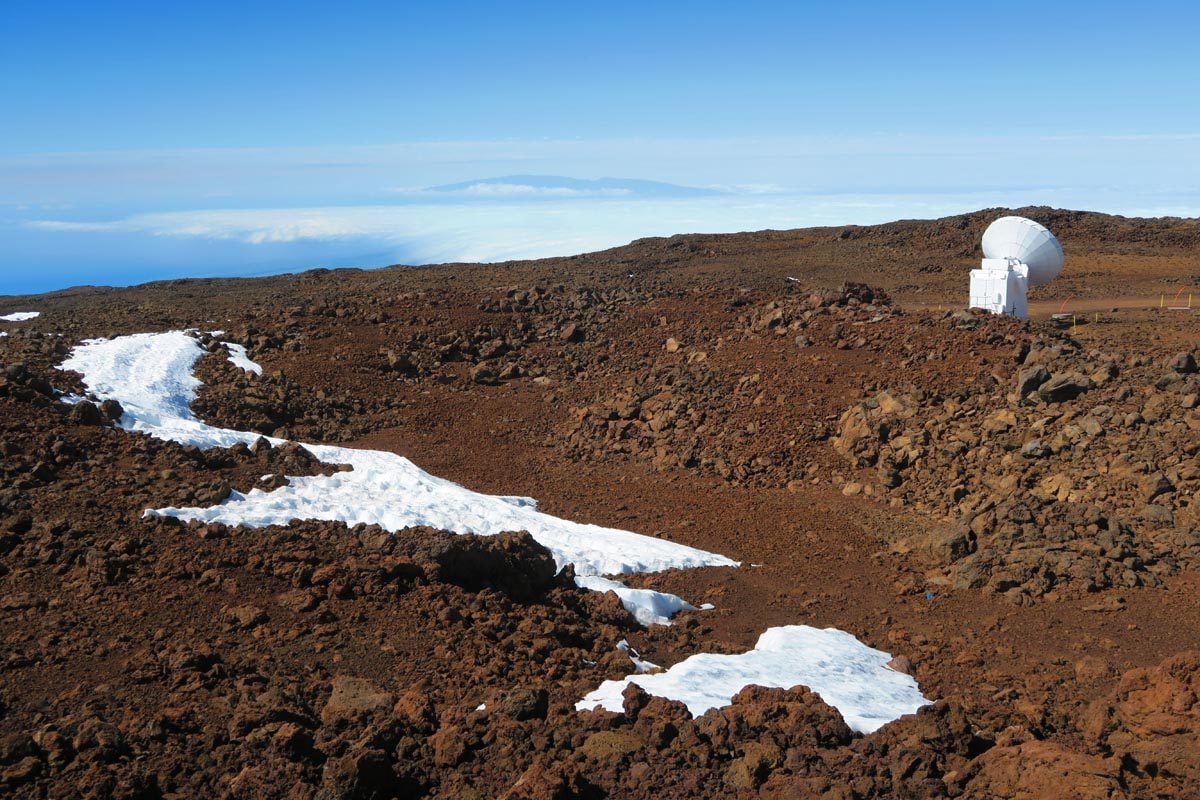
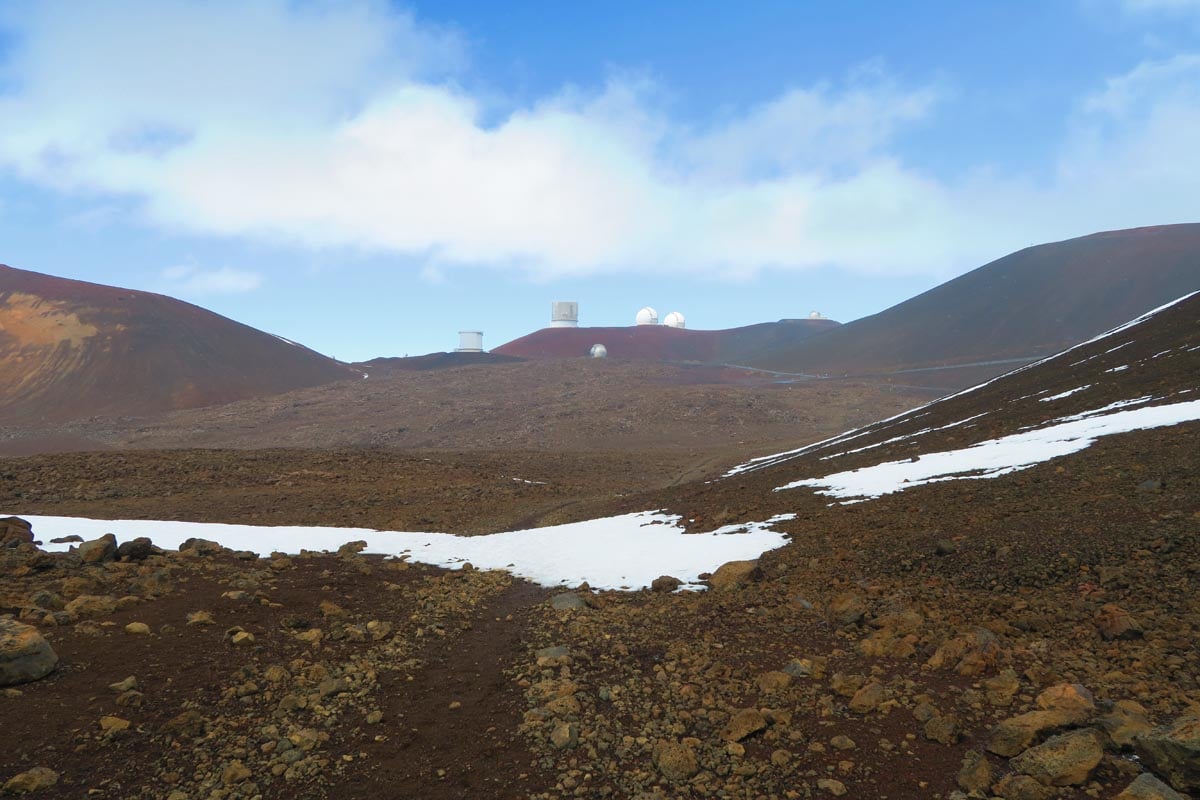
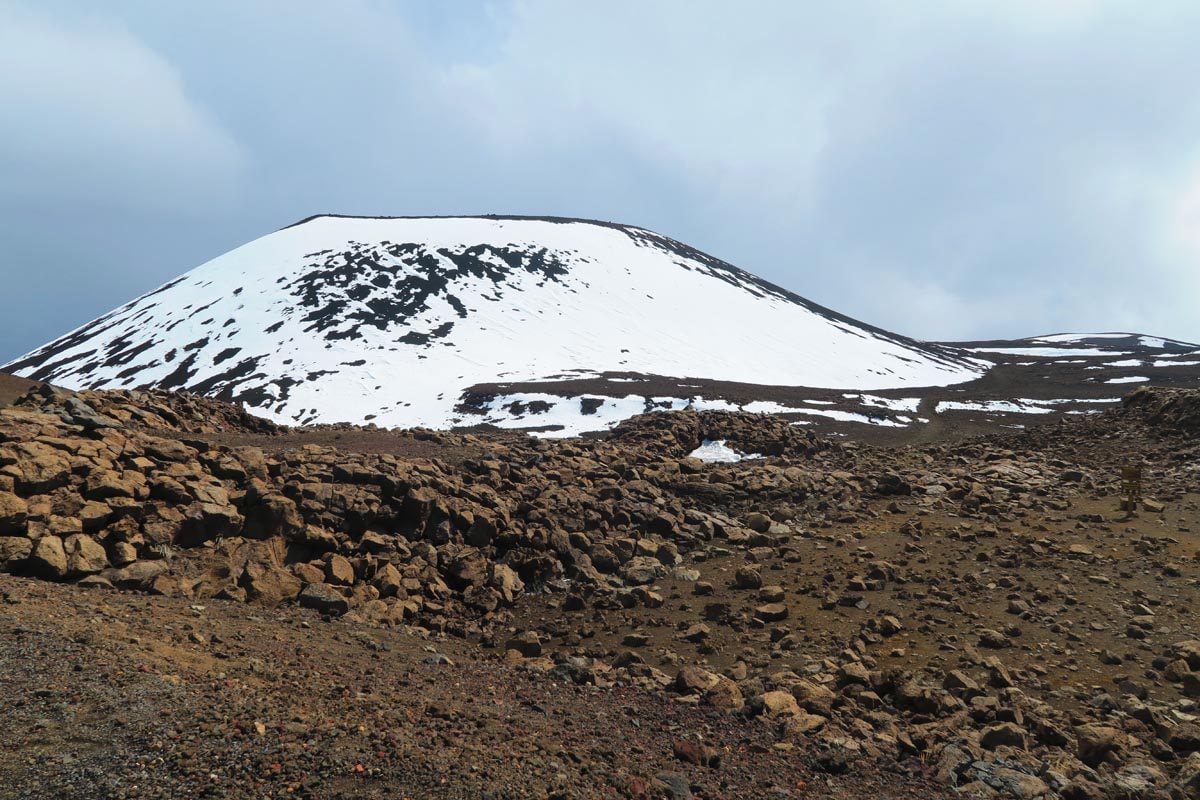
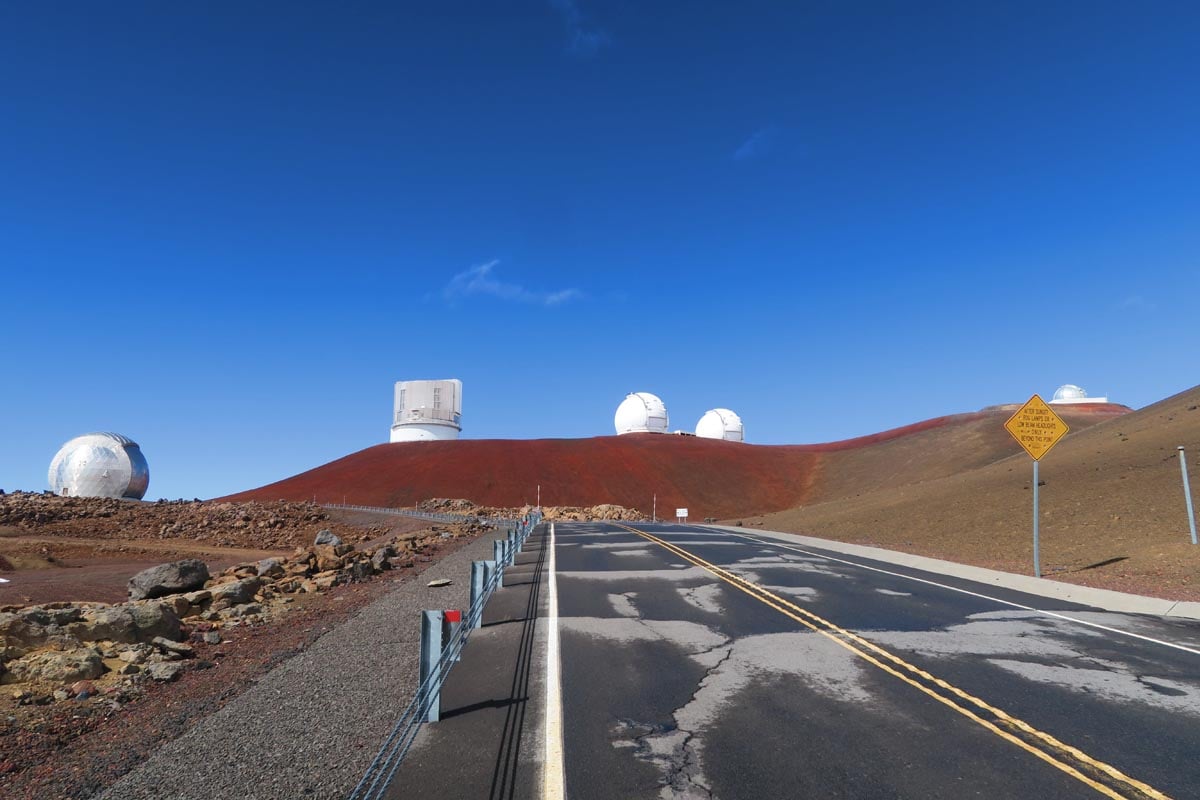
Logistics
First, check the weather forecast and if the trail is open. Aim to arrive at the visitor’s center by no later than 10 am to check in with the rangers, sign an information sheet, wait 30 minutes to acclimate to the altitude, and grab a trail map.
Wear two pairs of socks, long pants, and a few layers of shirts (sweat-repelling t-shirt, long-sleeve t-shirt, fleece, and rain jacket). Pack: winter hat, gloves, scarf, 3L of water per person, enough food and snacks, lip balm, tissues, a garbage bag, and sun protection.
Be aware that the weather can quickly change. When I hiked, the forecast called for a sunny day; however, clouds quickly moved in, and it started to snow midway through the hike! Do not hike past the visitors center if you went scuba diving the day before.
Option 2: Green Sand Beach
Start the day with a visit to either the Kona Farmers Market in Kailua or the Pure Kona Green Markets in Captain Cook to buy a picnic lunch and snacks. Then, visit the spectacular sea cliffs at the End of the World before beginning the long drive south to Green Sand Beach (see full detail in option 1).
The drive south to Green Sand Beach from Kailua takes about 90 minutes. If you haven’t found anything you fancy for lunch in the markets, there are many food and drink options until the turnoff to Highway 160. I recommend stopping for a stretch and fresh juice at the South Kona Fruit Stand before the last leg to the beach.
South Point
Eventually, you’ll reach South Point- a peninsula extending to the southernmost spot in the 50 states. Follow South Point Road until it ends. Due to the fragile natural environment, you cannot drive to Green Sand Beach, even with a 4WD. If any local offers to take you for a small fee, they are breaking local law!
Hiking to the Green Sand Beach
The hike to Green Sand Beach takes you along the beautiful coastline for about 1 hour. It’s a flat-going, easy hike where the views keep improving. When you round the last corner, you’re rewarded with the ‘money shot’ of Papakolea Beach, a.k.a. Green Sand Beach! If it’s sunny, you’ll easily understand how the beach gets its name. The greenish colors result from finely eroded sand from a volcanic rock.
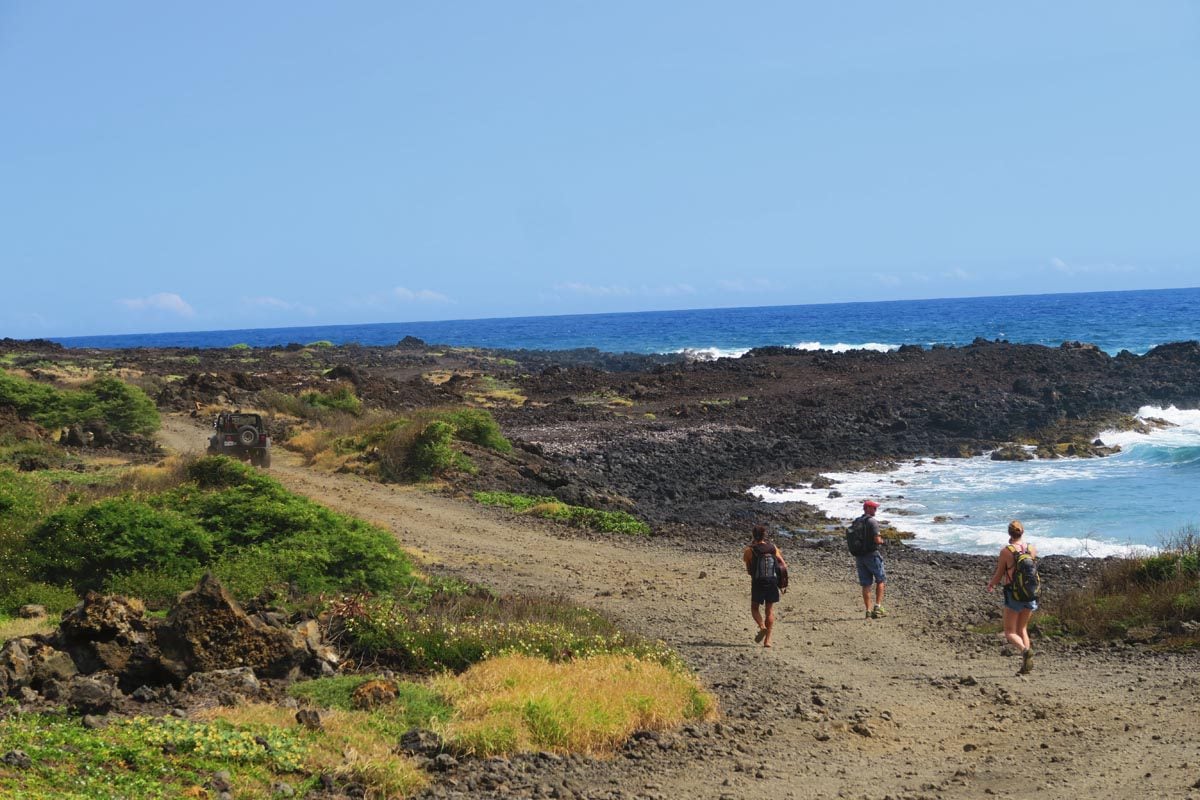
To reach the beach, walk down the makeshift path and enjoy one of the best beaches in Hawaii! As for swimming, it was fantastic. The water was clear, the waves not too high, and I felt protected inside the hidden cove. That said, I have read about dangerous currents at this beach. There are no facilities, so bring everything you’ll need and take everything out. If you’ll swim, I recommend bringing a change of clothes to ensure a smooth hike back to the parking area.
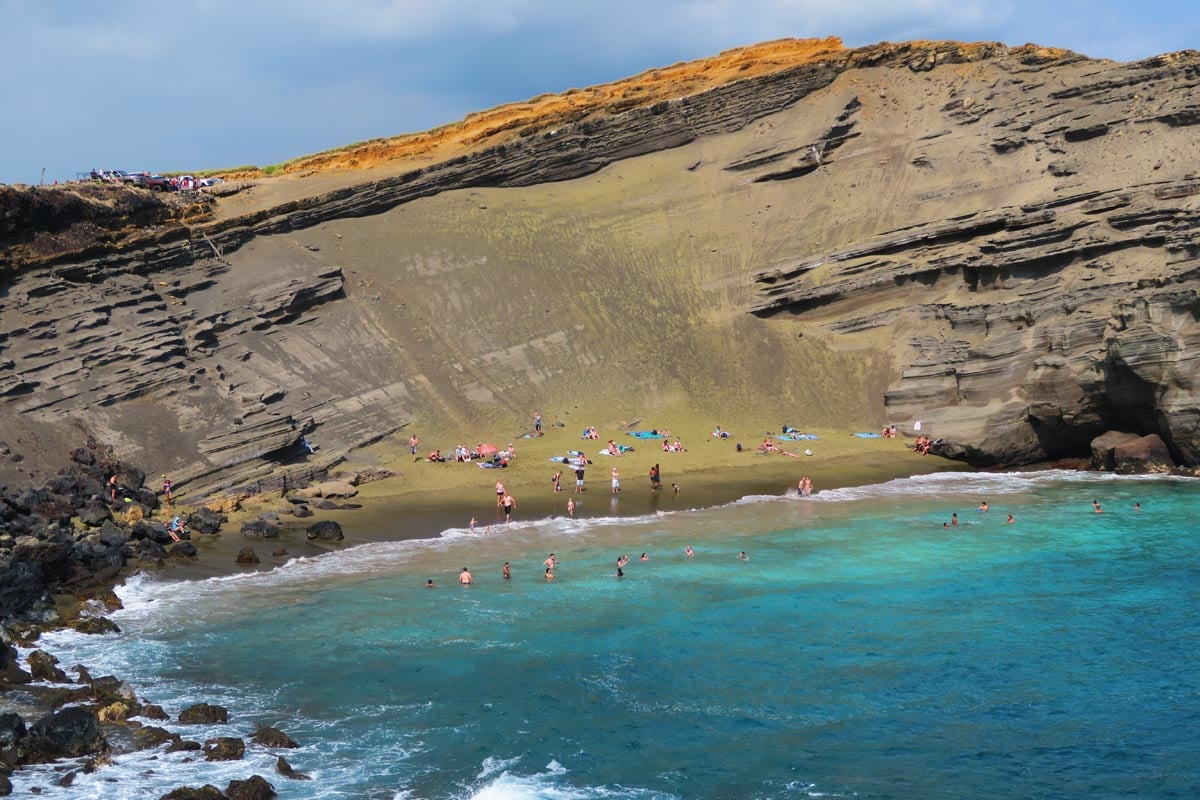
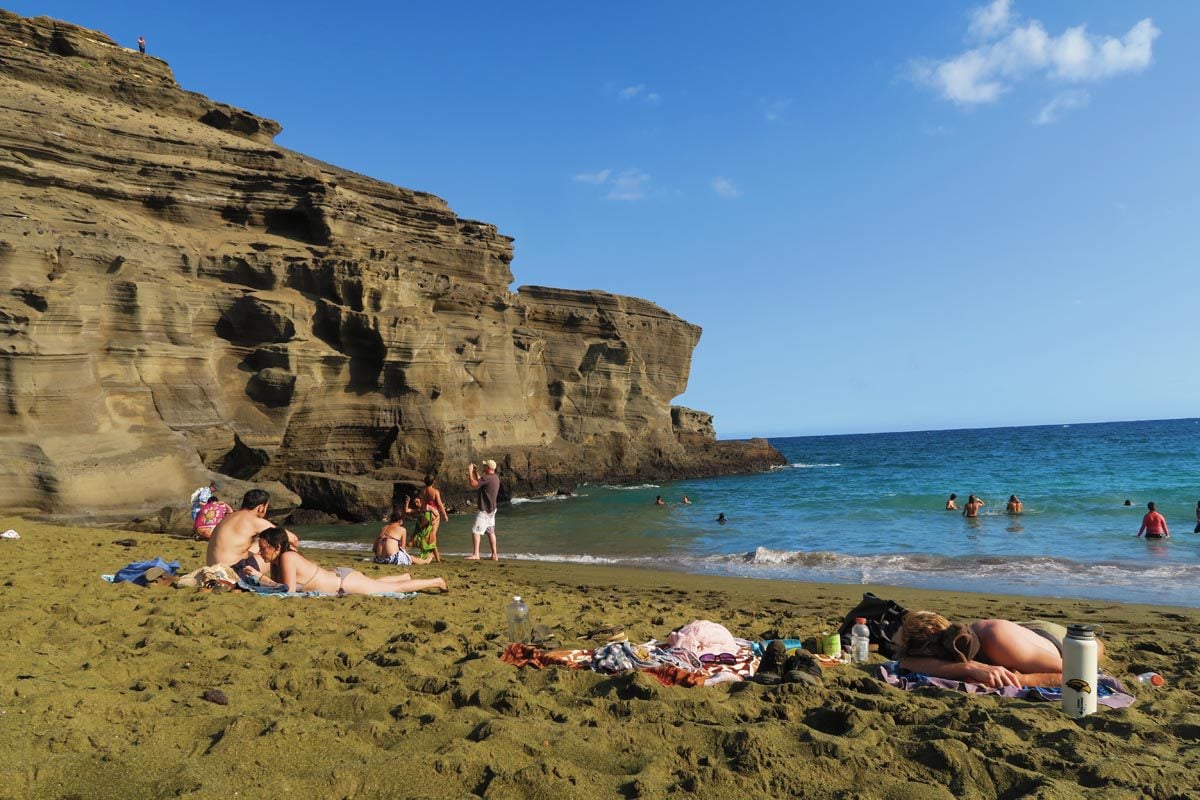
Before Driving Back
If there’s still time, stop at Ka Lae – Hawaii’s southernmost tip. If you still fancy more beaches, Punalu’u Black Sand Beach is one of the best on the island, and Honomalino Beach is a favorite with locals (and sea turtles).
Option 3: City of Refuge, Snorkeling at Two-Step & Beach Time
Just like with option 2, start the day with a visit to either the Kona Farmers Market in Kailua or the Pure Kona Green Markets in Captain Cook for a picnic lunch and snacks for the day. Then, visit the spectacular sea cliffs at the End of the World before driving south to Two-Step Beach (see full details in option 1). You’ll also find many other food options before Highway 160 and Two-Step.
St Benedict’s Painted Church
A few miles after the turnoff from Mamalahoa Highway (HWY 11), look for the easy-to-miss sign on the right to St. Benedict’s Painted Church. Step inside and be whisked away to a tropical version of a holy paradise. The church’s wooden interior is beautifully painted in true Hawaiian fashion by a Belgian missionary John Velghe in 1899.
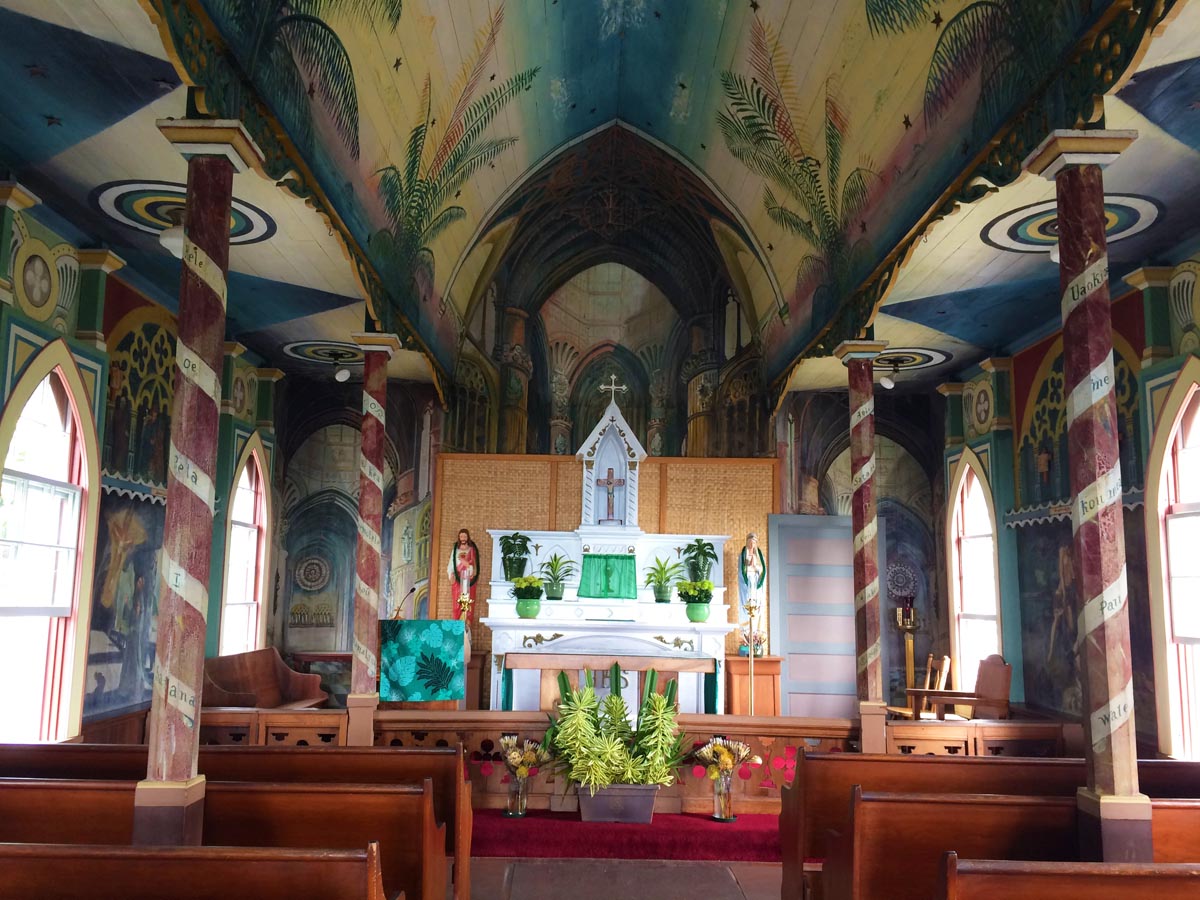
City of Refuge
The combination of easy access and good state of preservation makes the visit to Pu’uhonua o Honaunau National Historical Park a worthwhile stop before snorkeling at the adjacent Two-Step Beach. Meaning ‘place of refuge’ in Hawaiian, this was a residence of Hawaiian royalty that also doubled beyond its stone walls as a safe haven for ancient Hawaiians who broke the strict kapu system. By taking refuge here and receiving ‘treatments’ from the priests, violators of kapu could avoid a death sentence.
If you’re curious about Hawaii’s ancient history, park rangers offer guided tours. Otherwise, grab a map and explore the grounds at your own pace. Check out the ancient heiaus (stone temples), outrigger canoe and reconstructed tiki statues. It’s nowhere near as impressive as the ancient Polynesian temples of the Marquesas Islands in French Polynesia, but this is one of the best ancient sites I visited in Hawaii.
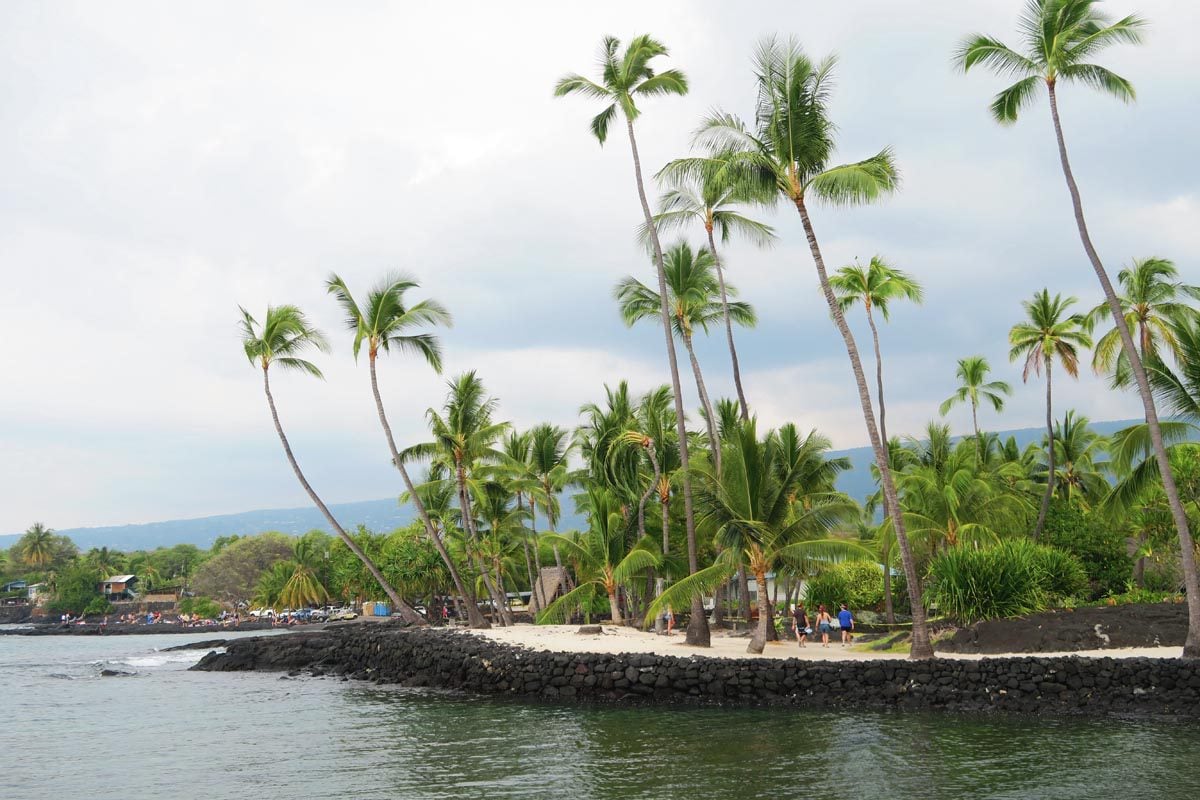
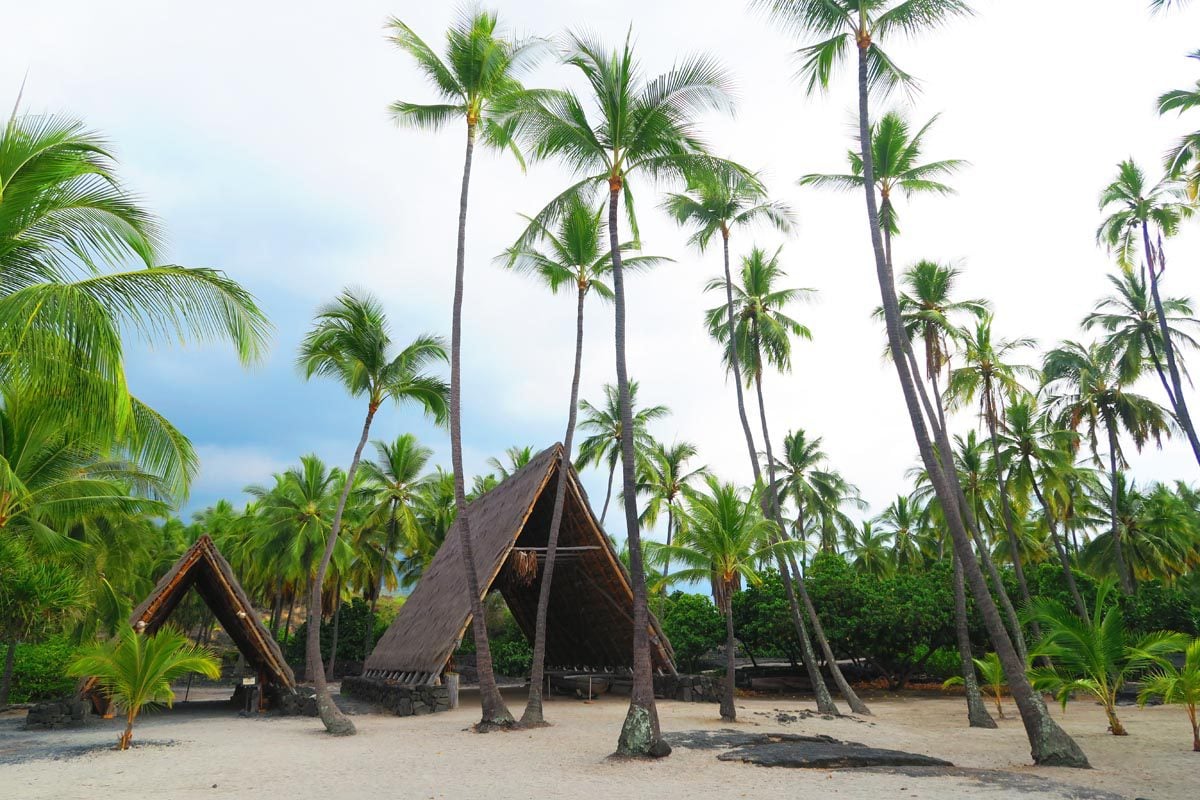
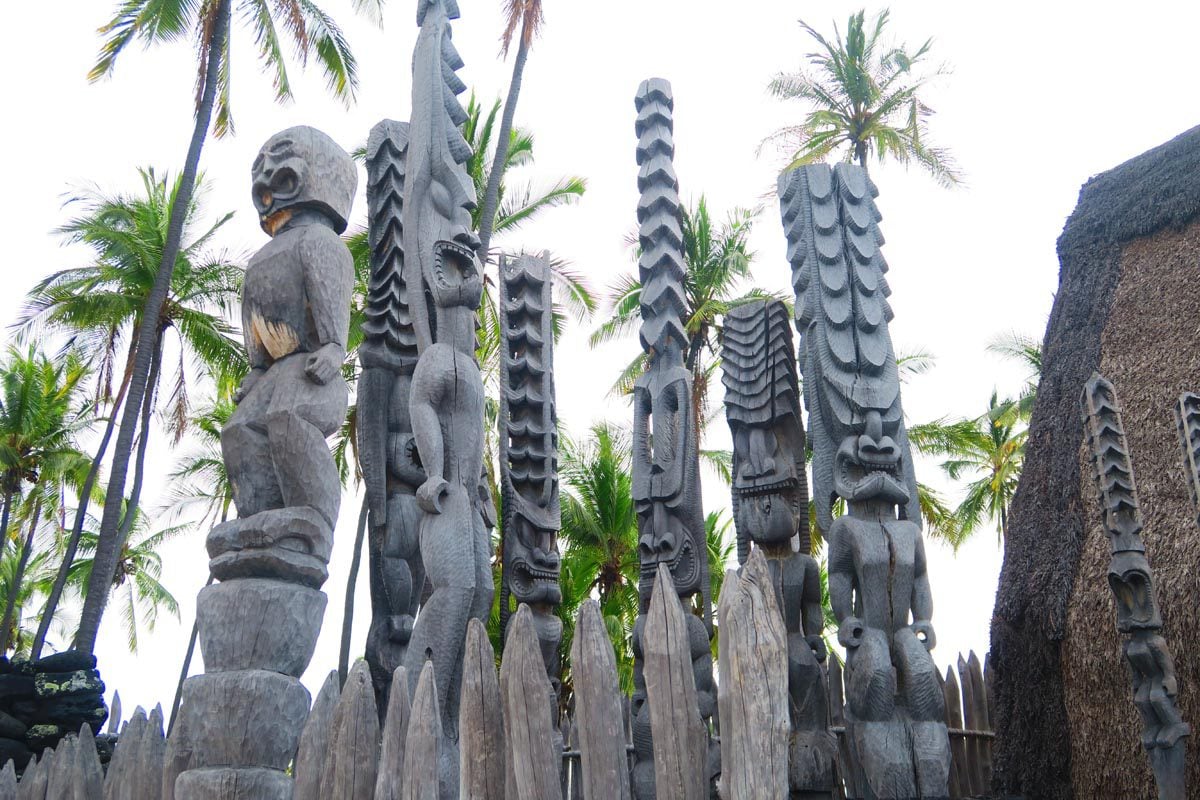
Snorkeling at Two-Step Beach
Two Step Beach is not actually a beach, per se, but rather a collection of smooth lava rocks leading down to a secluded bay. Find a spot on the rocks, put your gear on, and enjoy the vivid marine life. It’s the best place for snorkeling on the Big Island after the Captain Cook Monument (see option 1), but since it is easily accessible by car, it is popular.
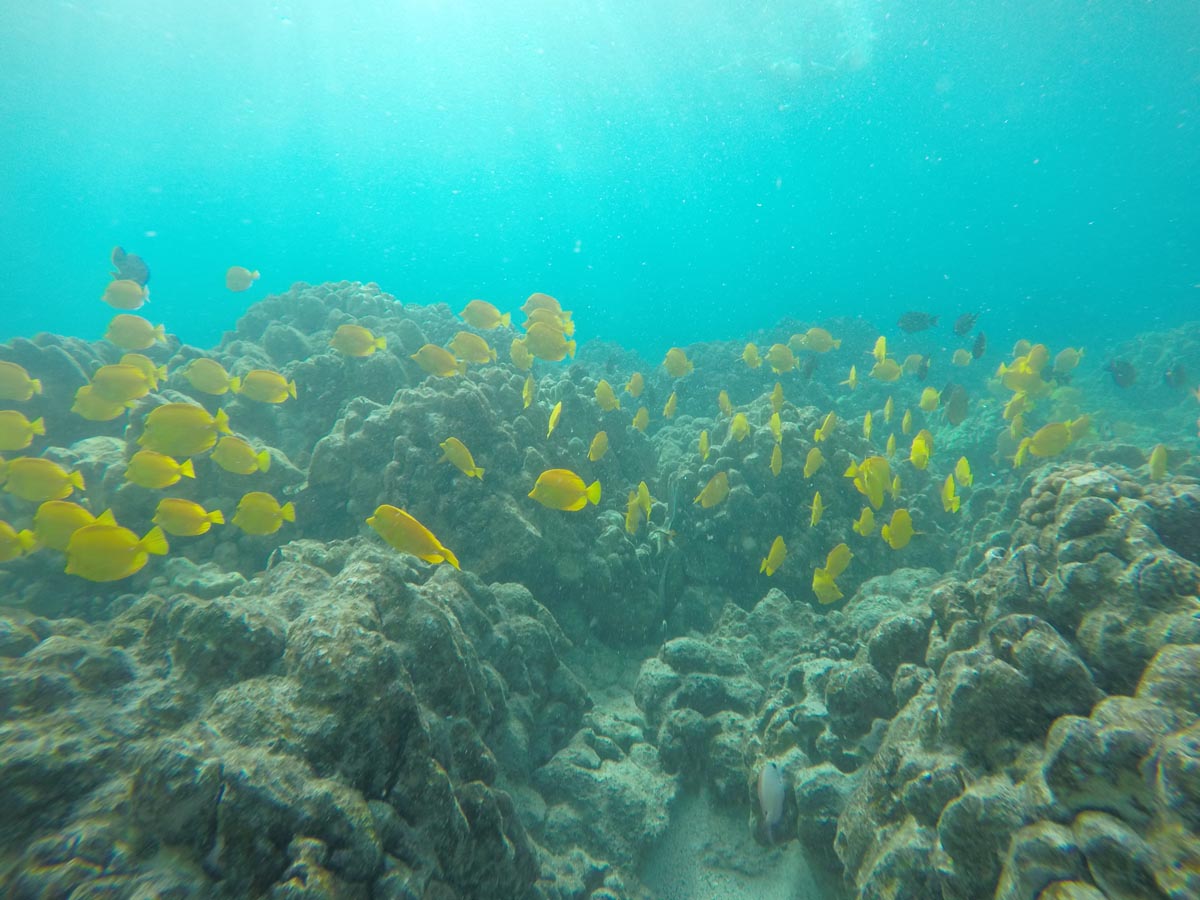
And why is it called ‘two-step’? All you need to do is take two steps beyond the lava ledge, and you’re inside the pristine coral garden. I recommend wearing reef shoes at the very least because exiting the water can be tricky, especially in rougher conditions. Fins will make life easy for you but not 100% required.
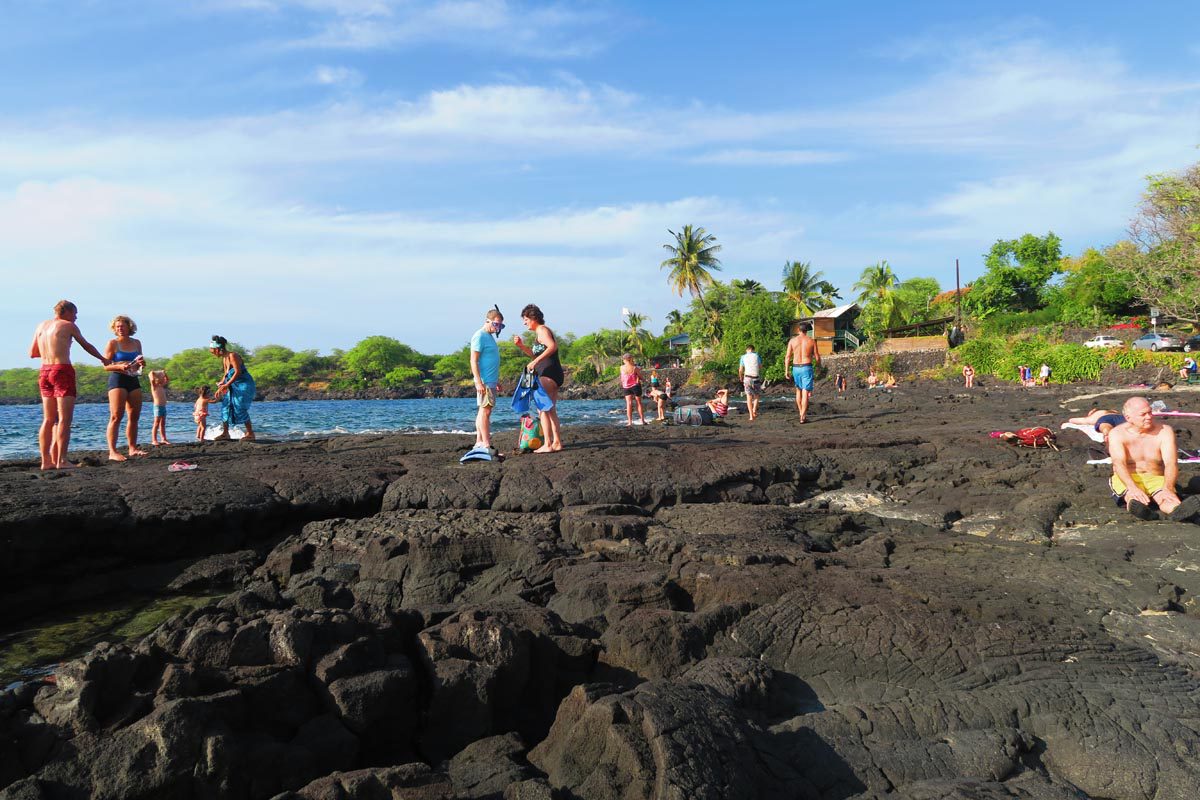
Ho’okena Beach Park
Back on the main road, stop for a smoothie at South Kona Fruit Stand and continue on the short drive to Ho’okena Beach Park. It’s one of the best beaches on the Big Island and a favorite choice with locals. The beach’s full facilities (outdoor showers included) and campsite make this place extra popular on weekends. The sand is a mix of black and gray, and the vibe is relaxing. Swimming can be rough in the winter, but there’s a good chance of spotting spinner dolphins and humpback whales offshore.
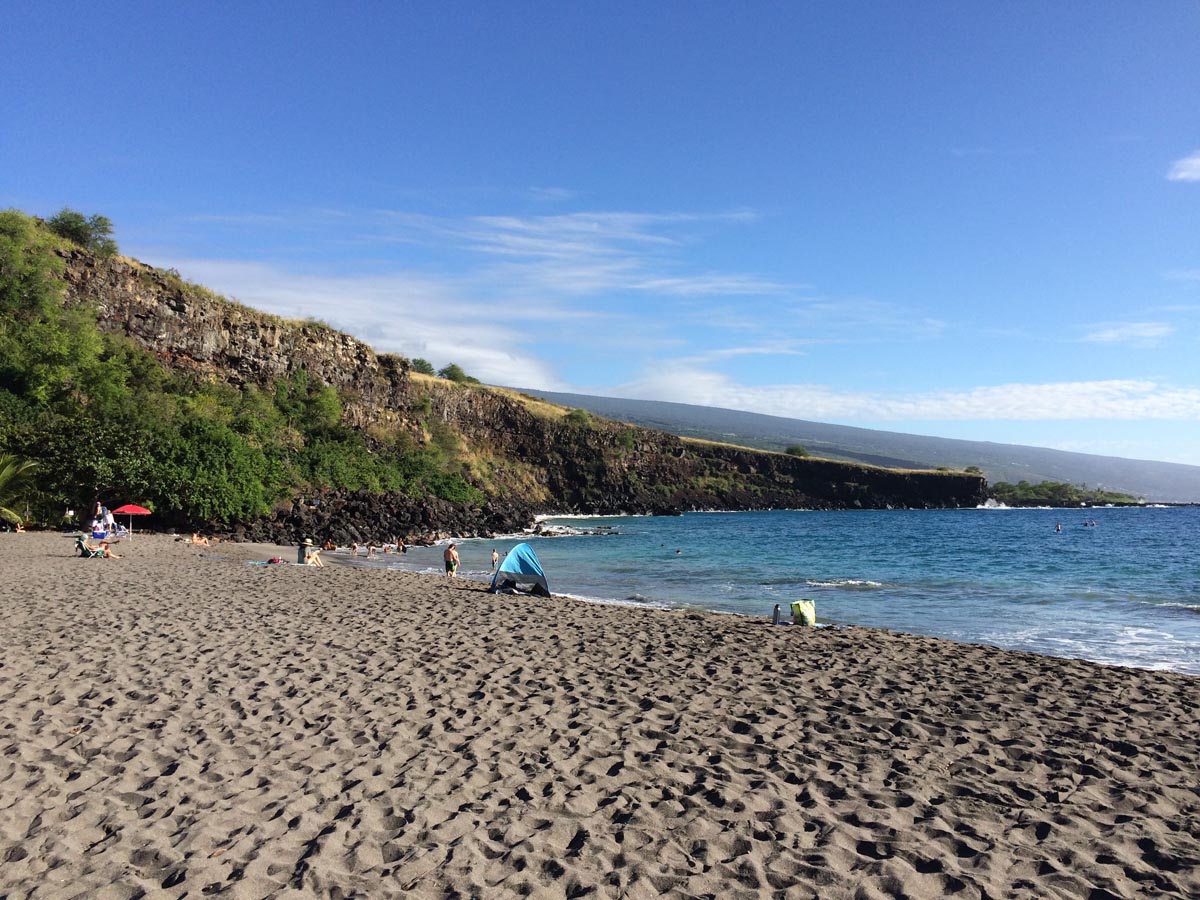
Option 4: Dive with Manta Rays
The last option I recommend for today acquaints you with one of the ocean’s most majestic creatures. The Kona coast is perfect for diving and swimming with manta rays. Boats usually depart in the evening, as viewing is optimal at night. Combine this option with a morning activity from one of the previous options.
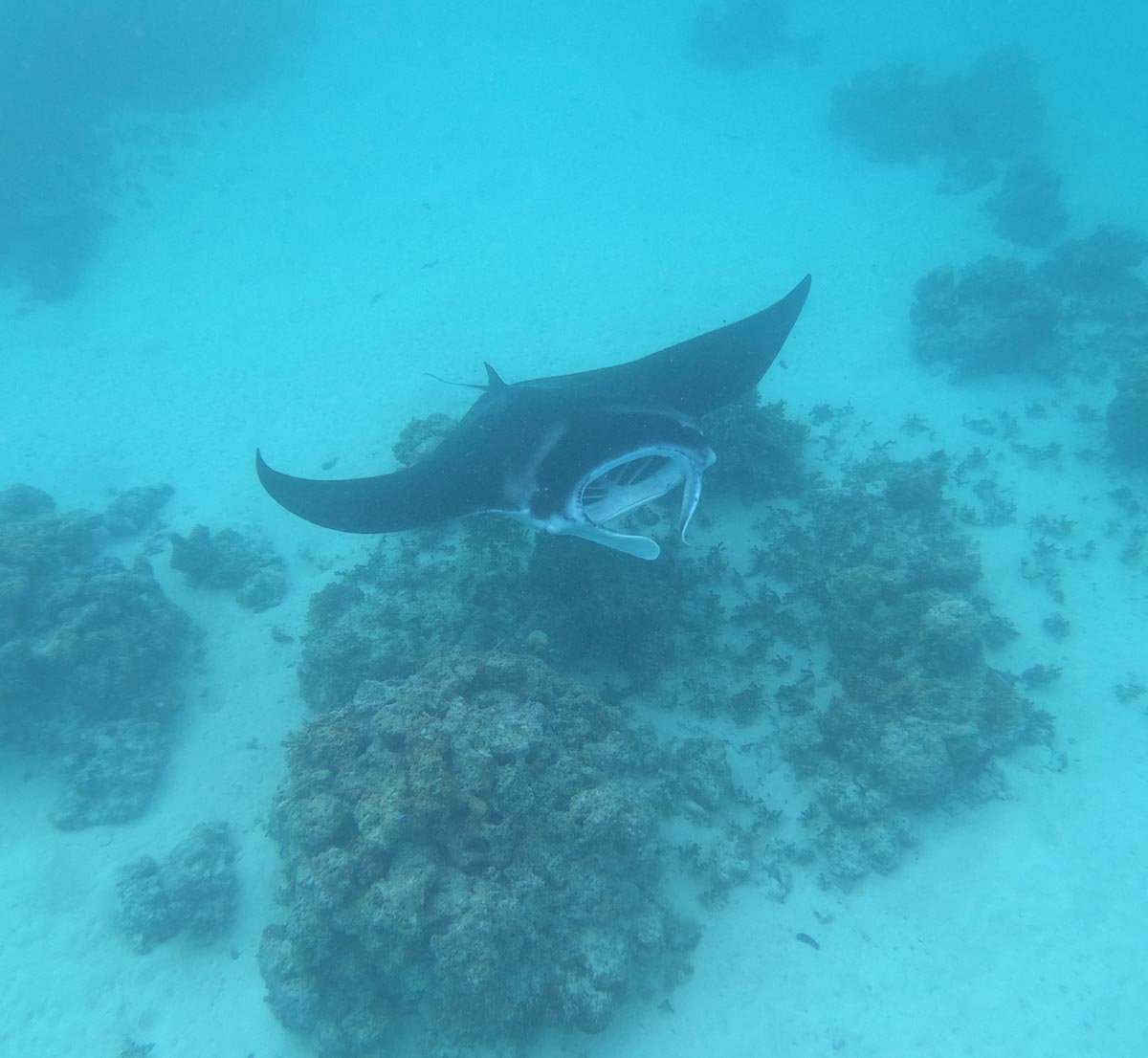
If you want to stick around Kailua-Kona for the day until the evening activity, head to Magic Sands Beach. It’s one of the prettiest beaches on the Kona Coast and a prime spot for sunsets. The beach gets its name from its ‘disappearing act’ during winter months when currents and waves strip the beach of most of its sand. There’s still enough of it to place a towel on, but the swimming can be rough (and very rocky).
